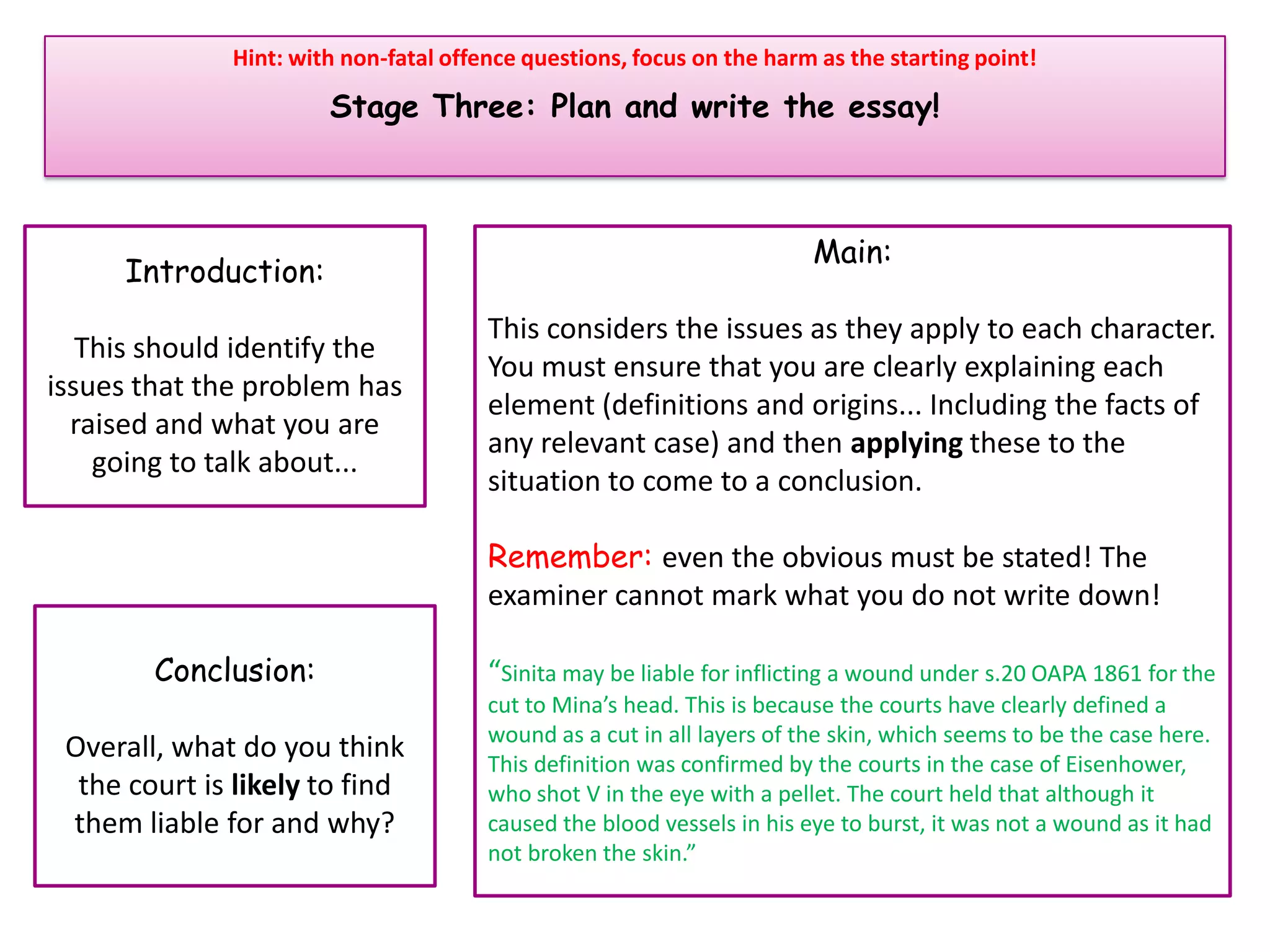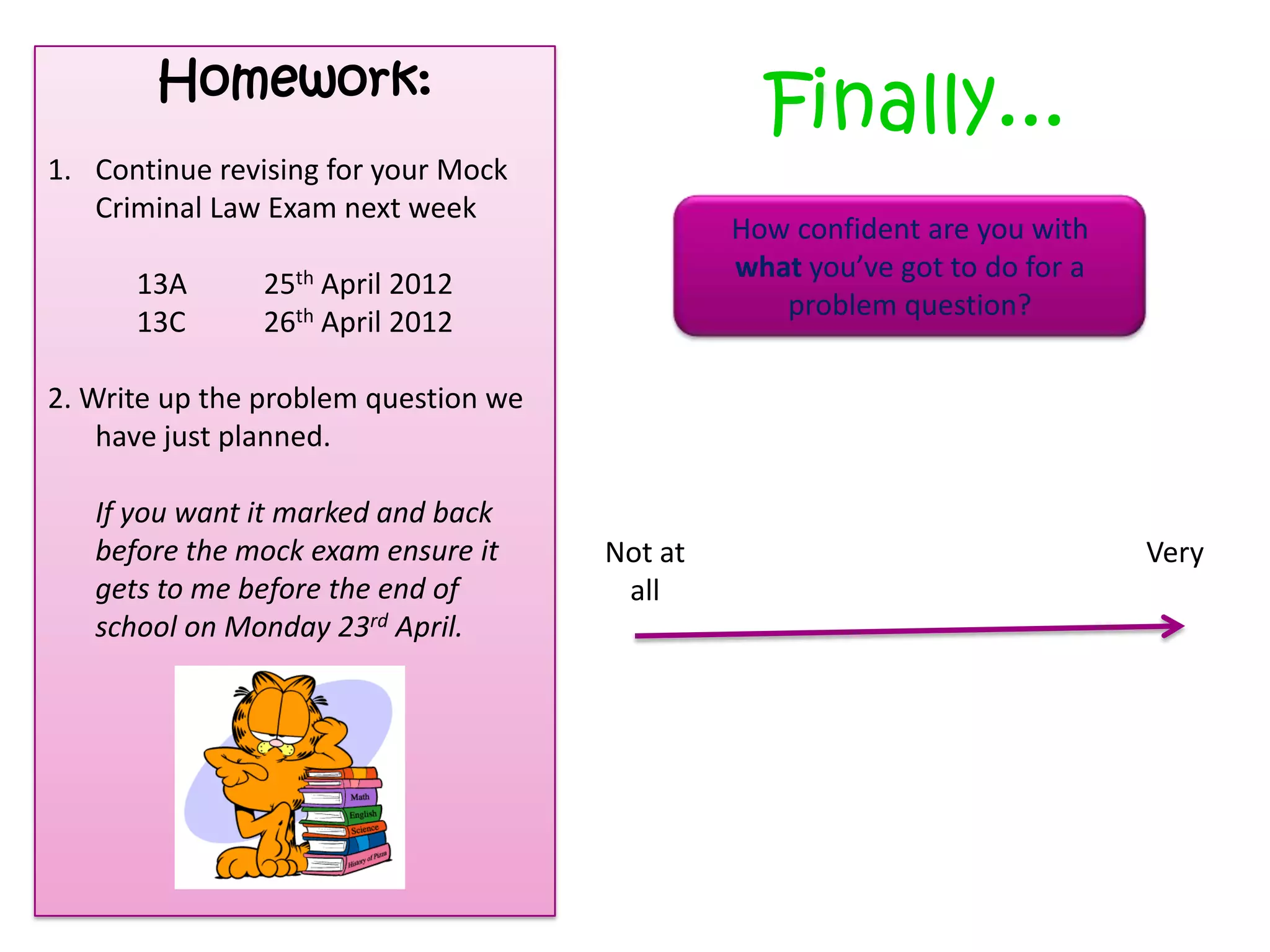The document discusses various non-fatal offences under criminal law, including common assault, battery, ABH, GBH, and malicious wounding. It presents scenarios for students to determine which offences are present and explores key cases that have shaped the legal definitions and thresholds for these offenses. The document also assigns group work for students to research and present on specific non-fatal offenses.
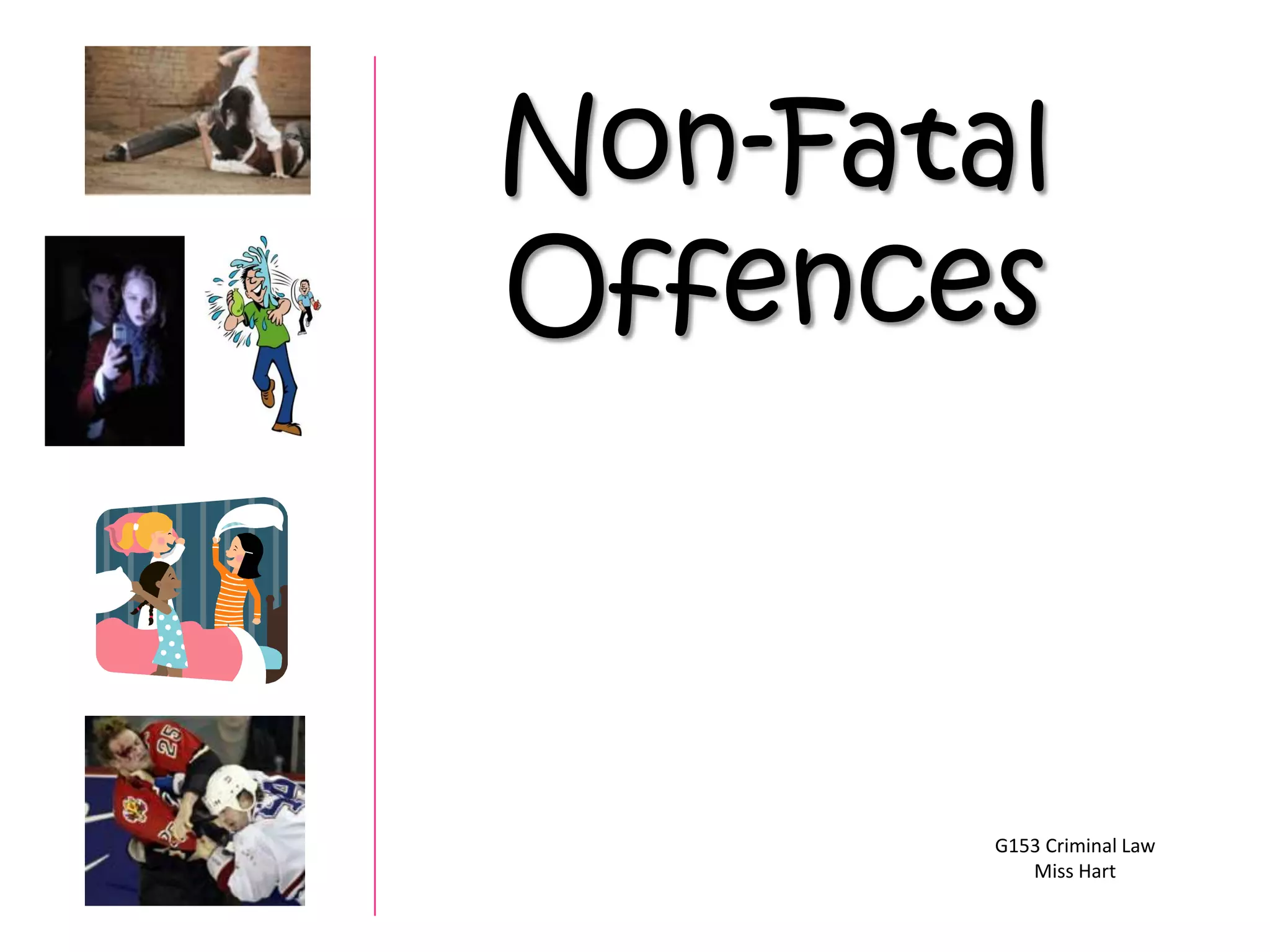
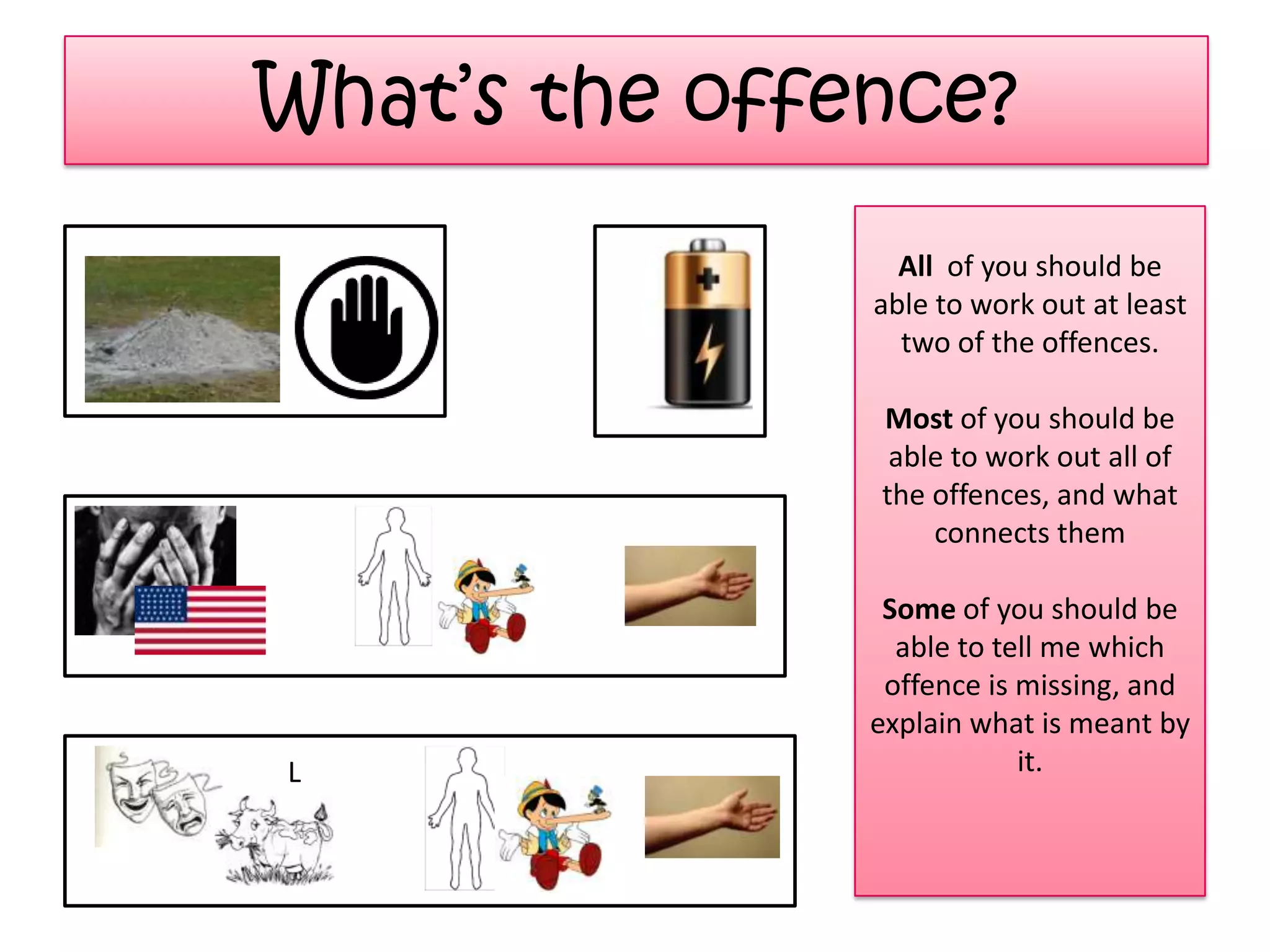
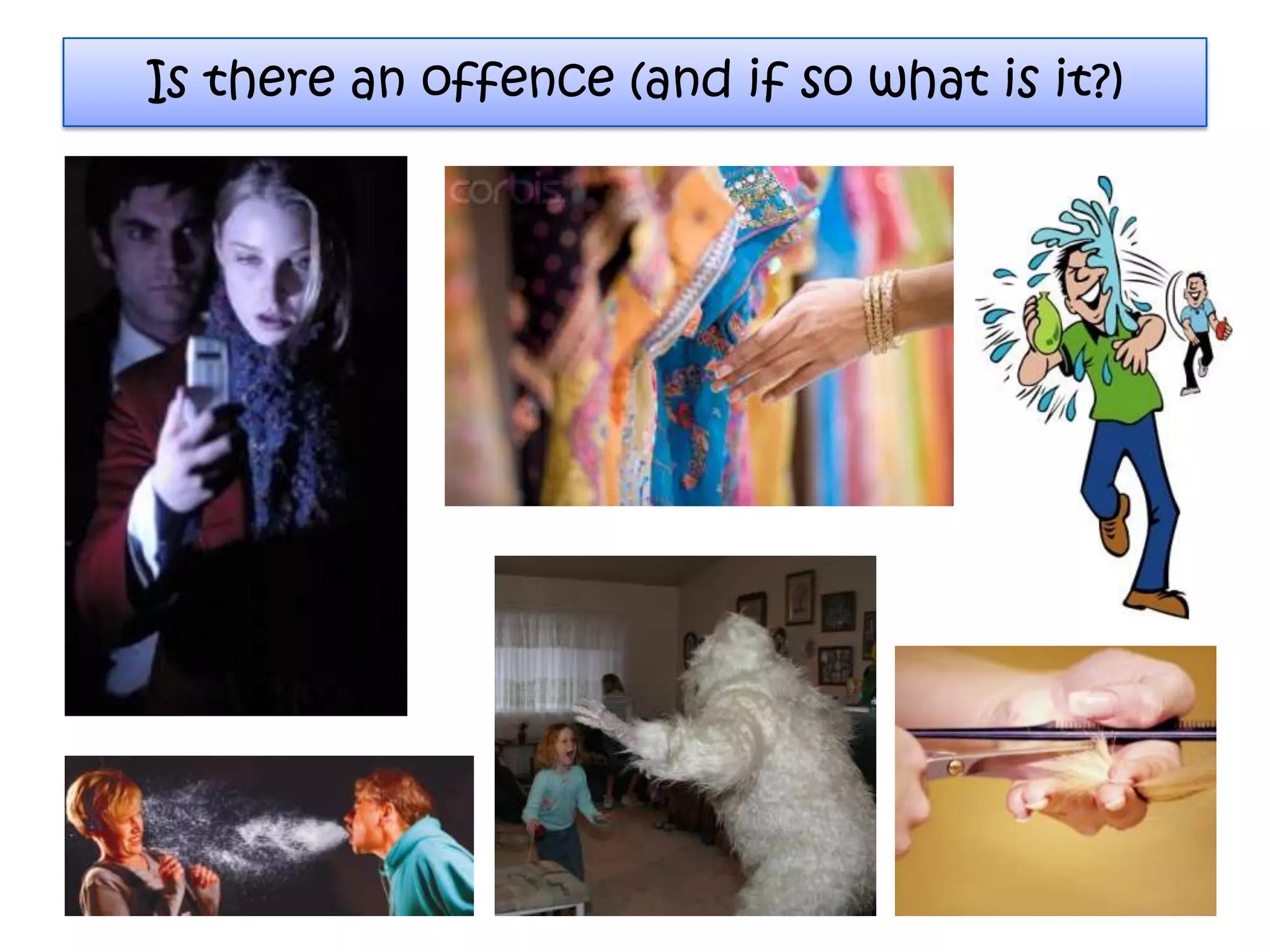
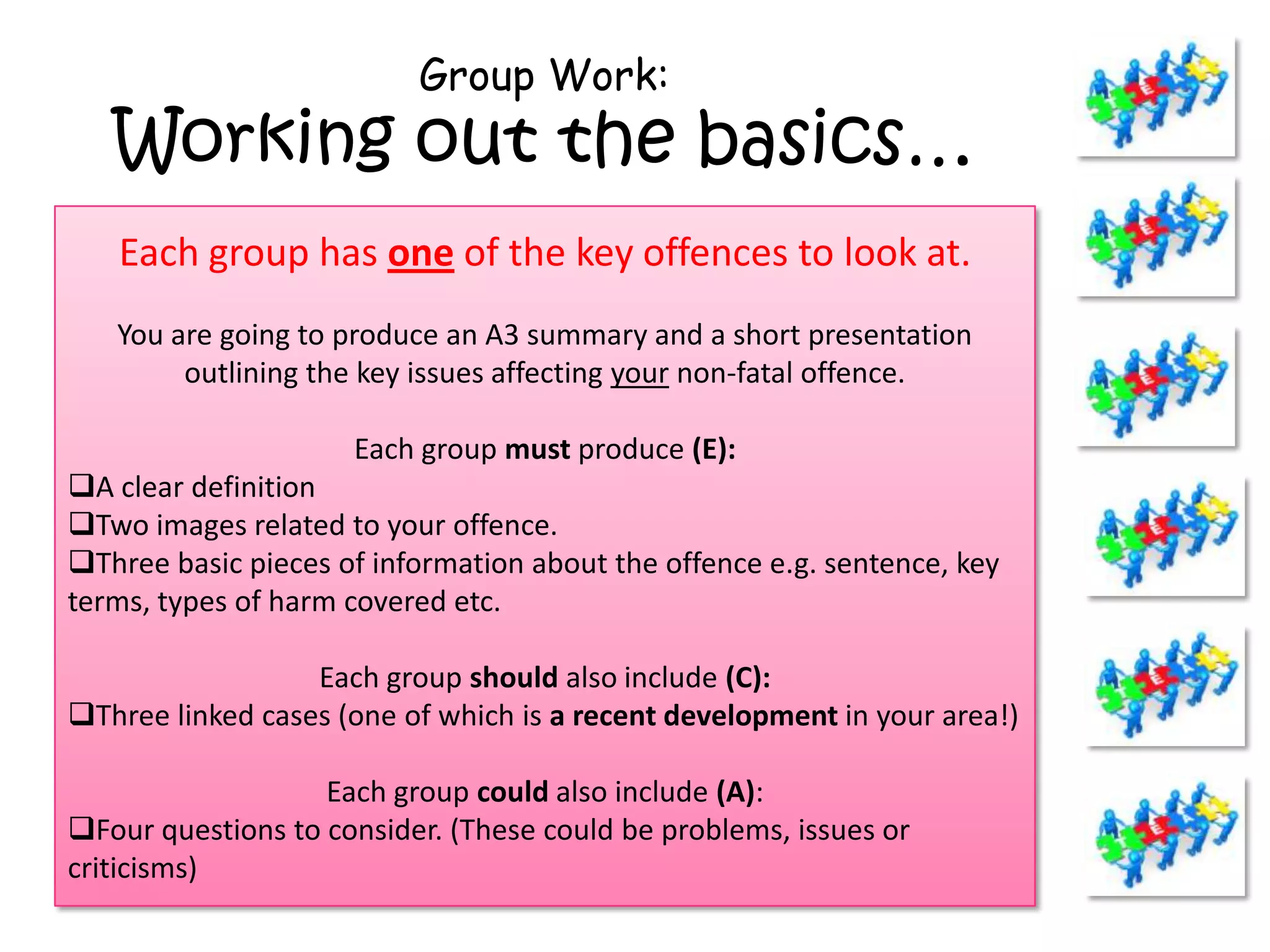
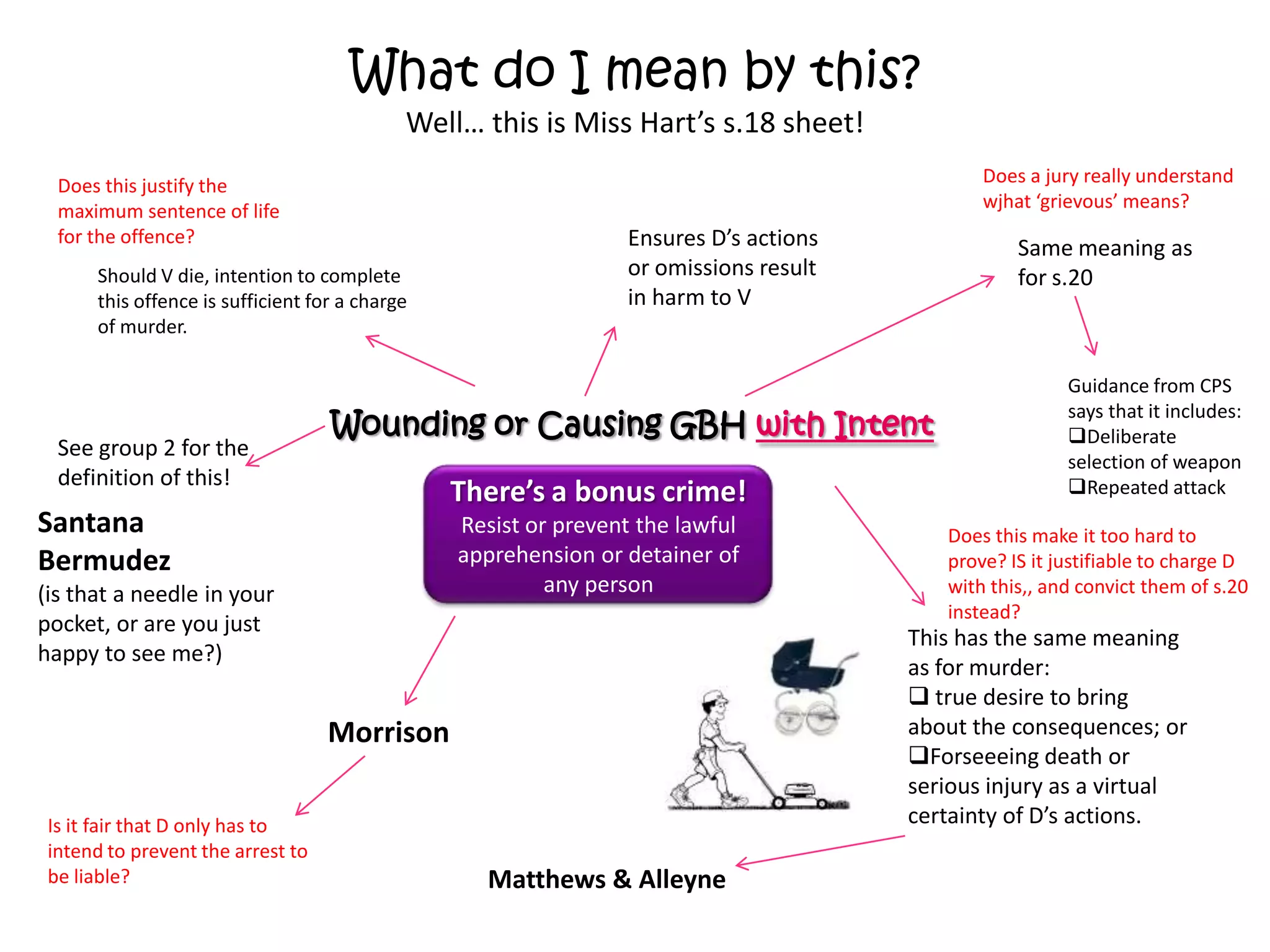
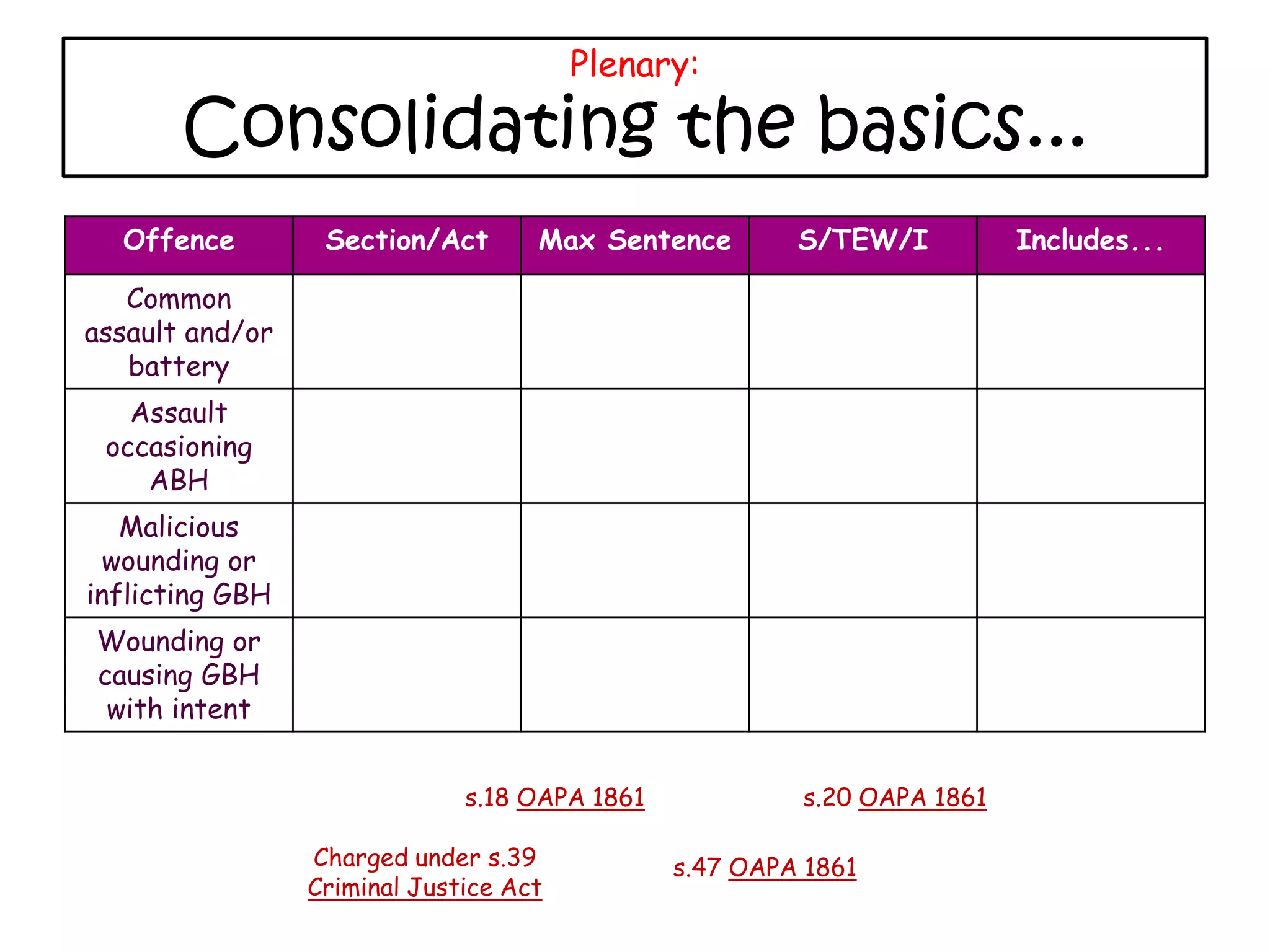
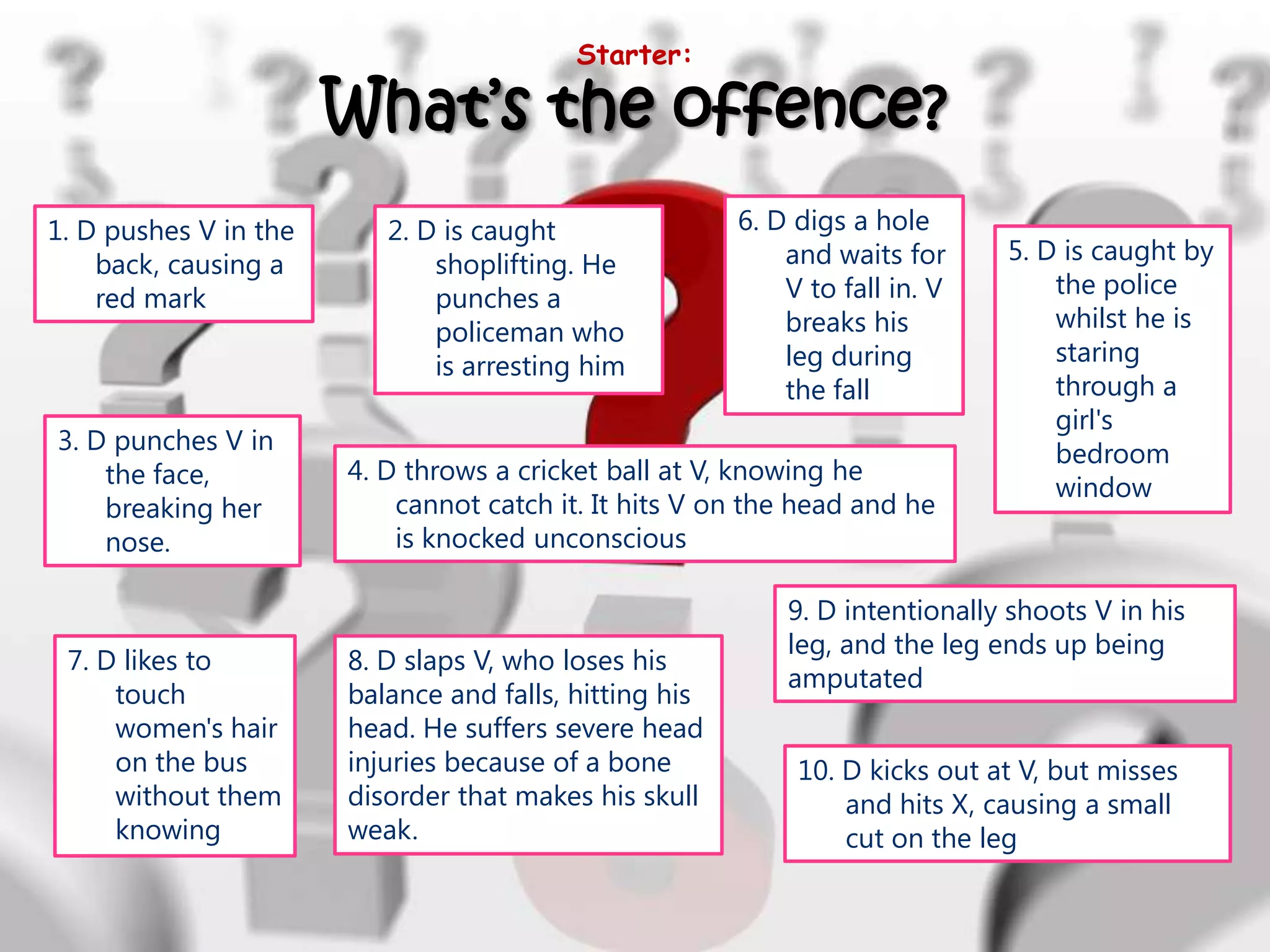
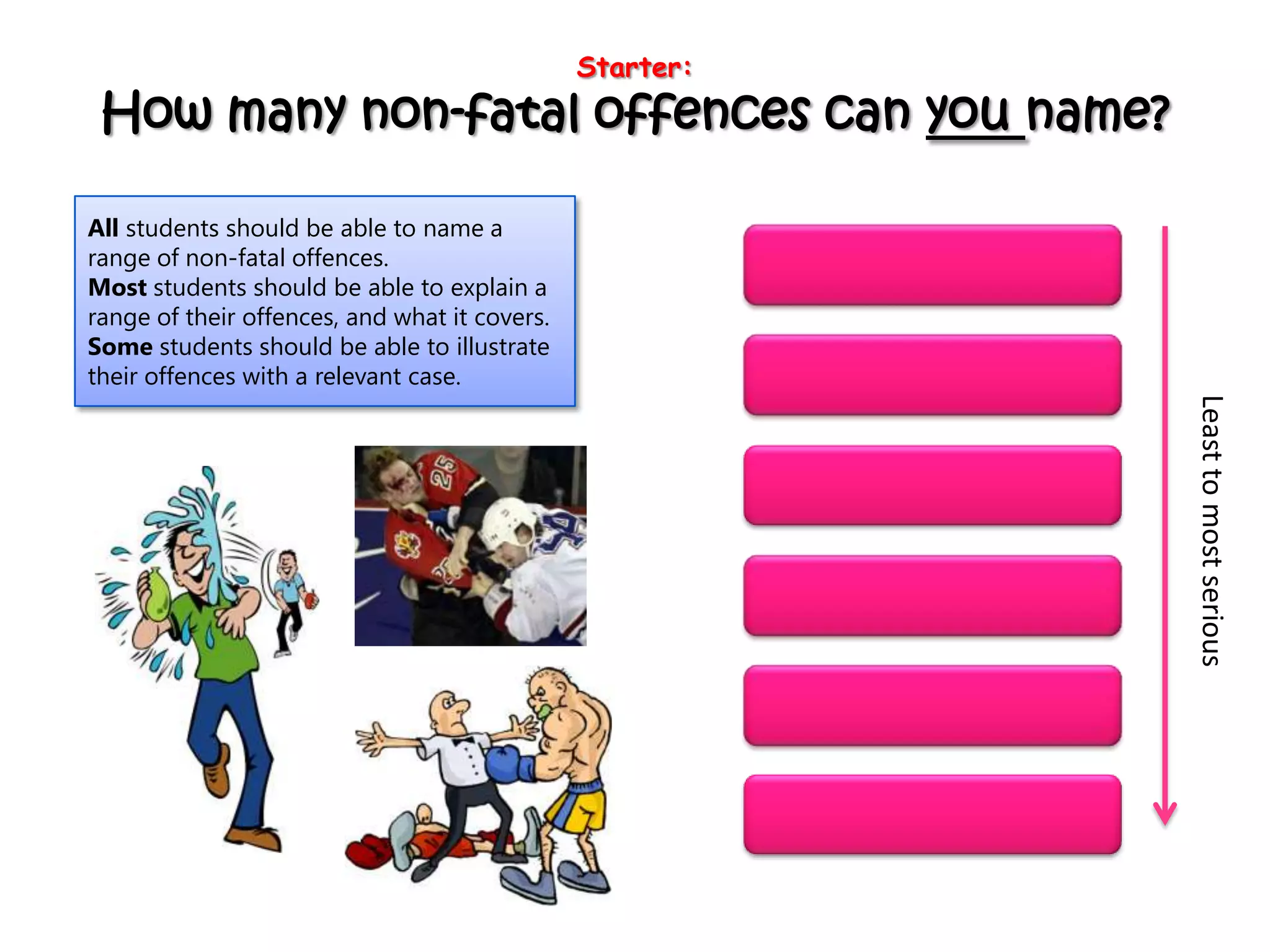
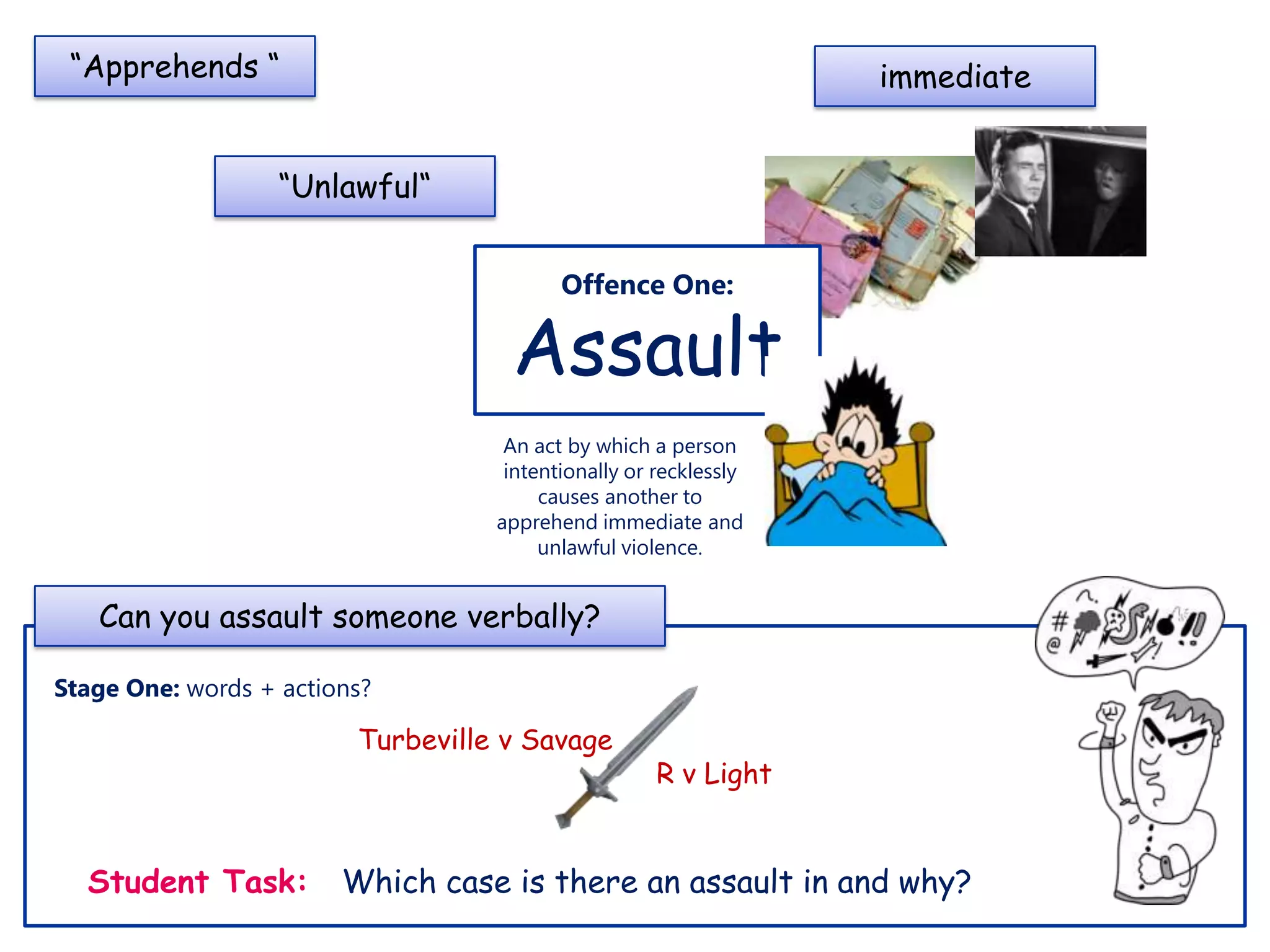
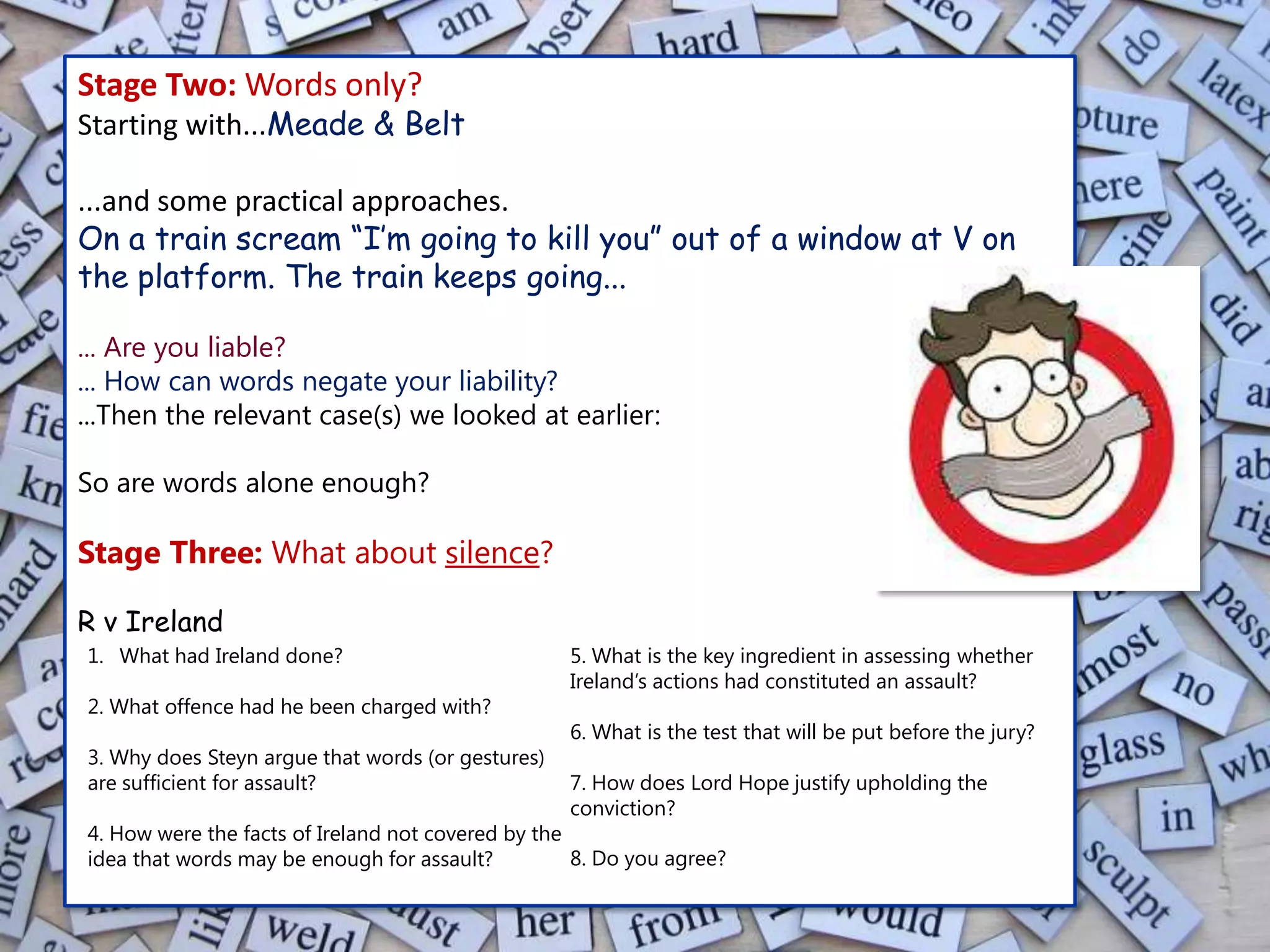
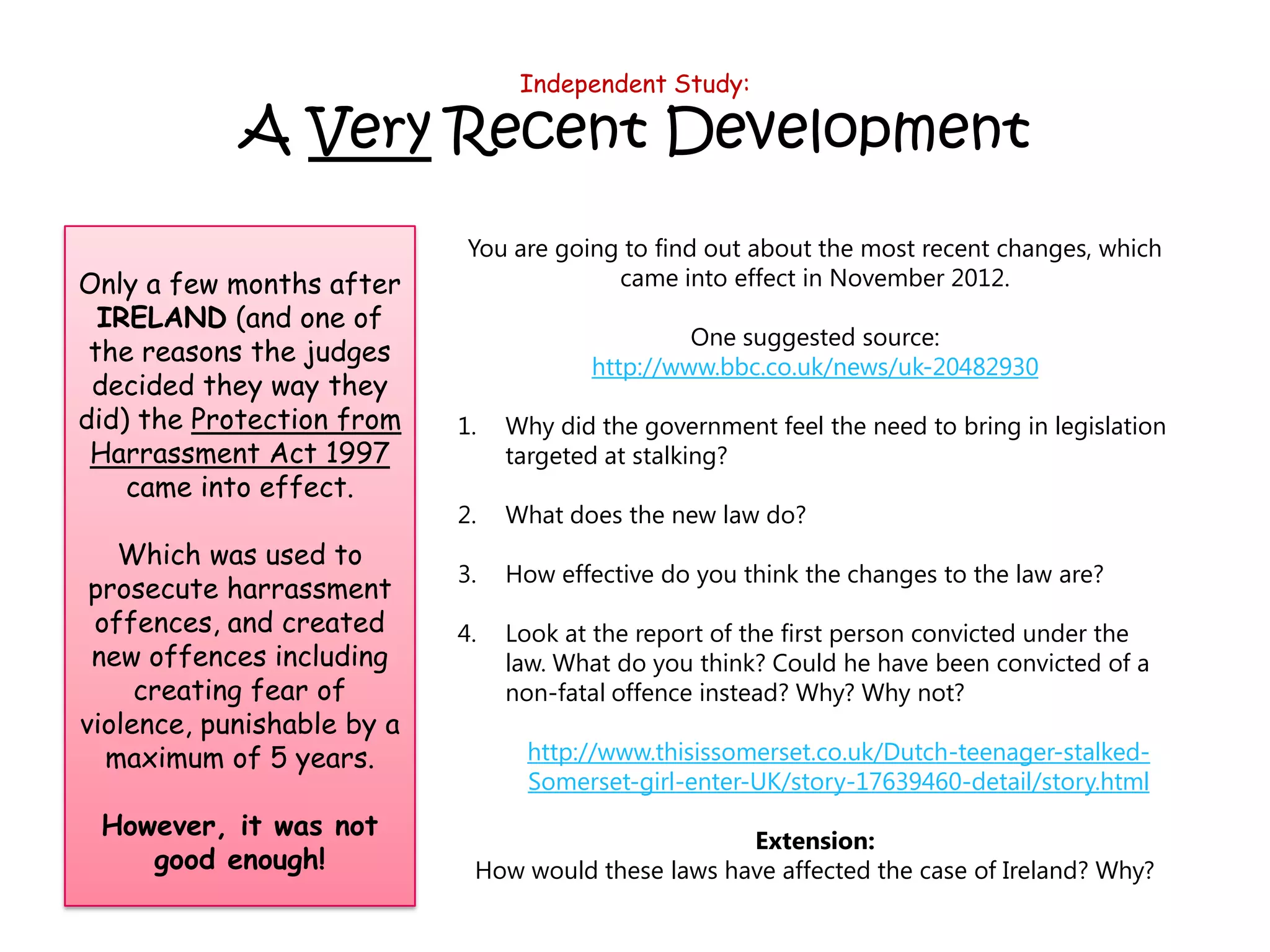

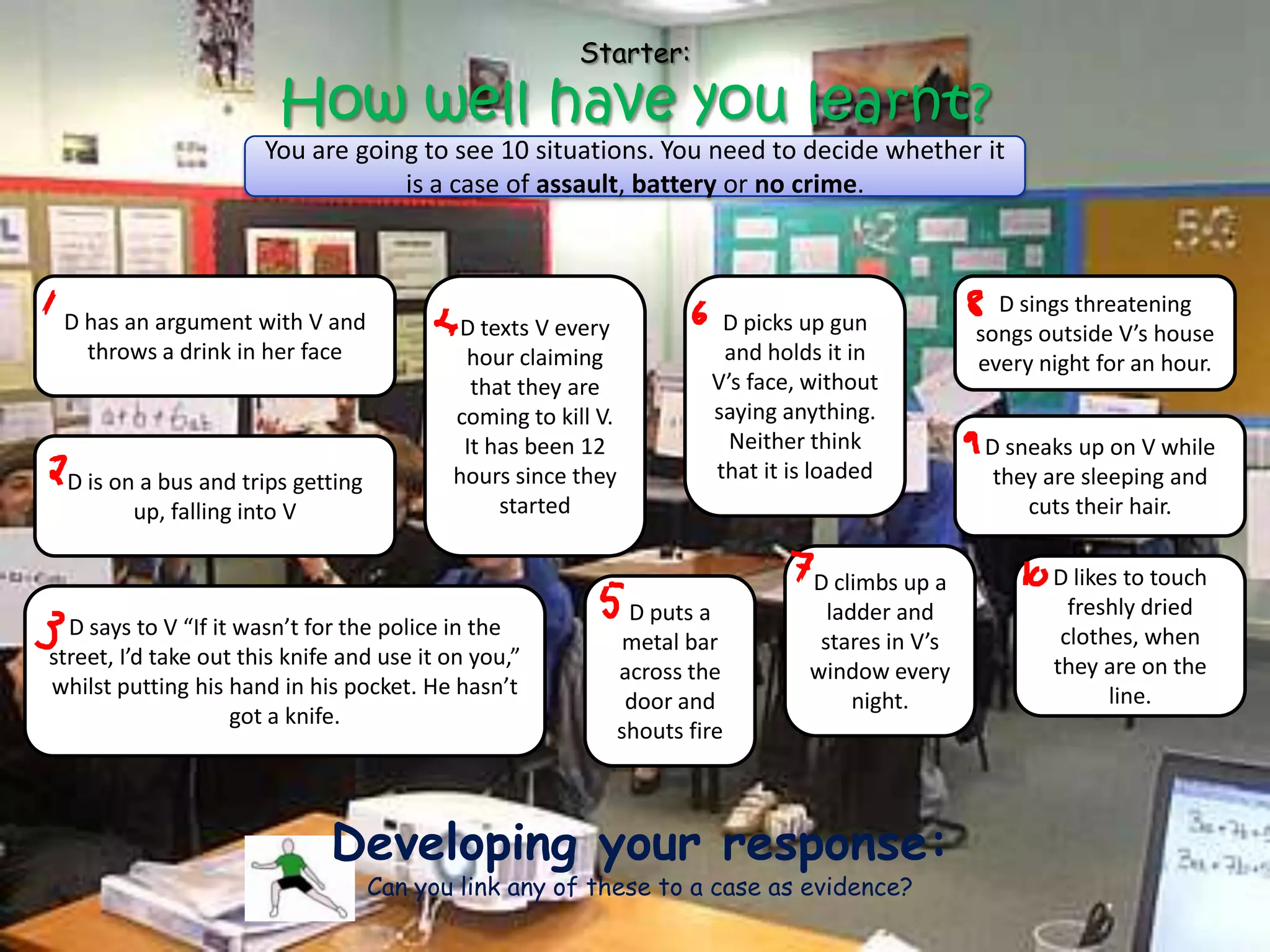
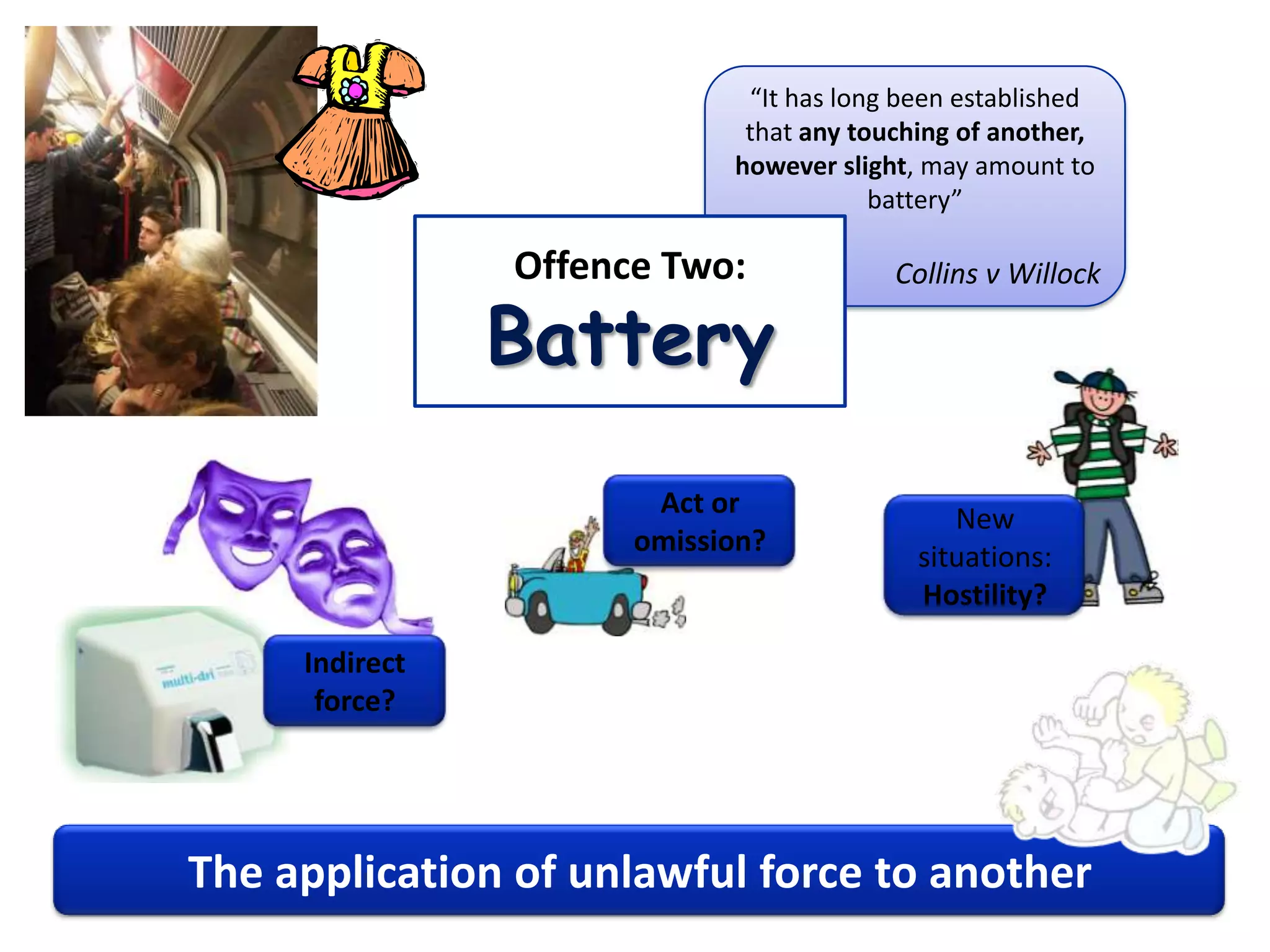
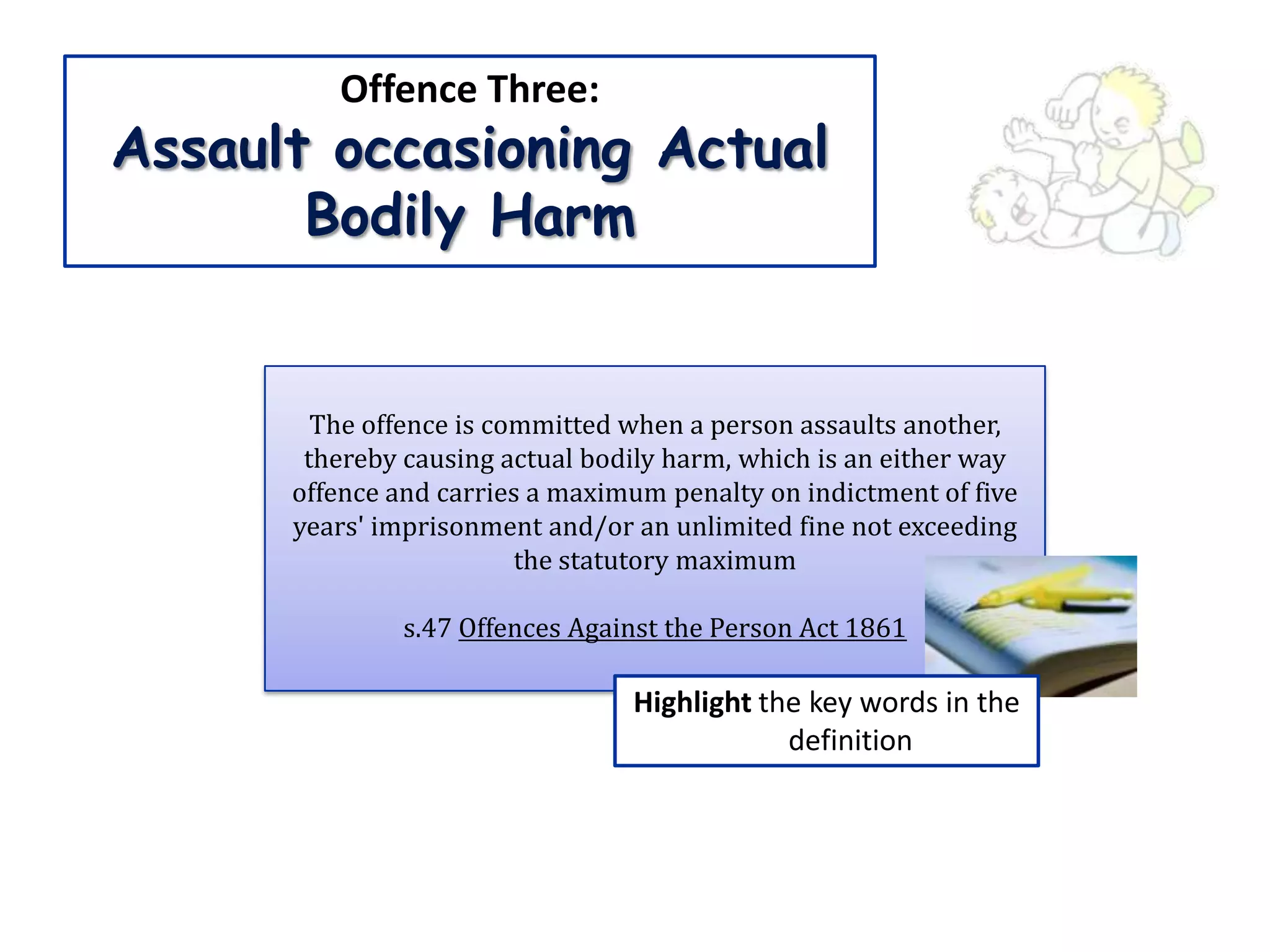
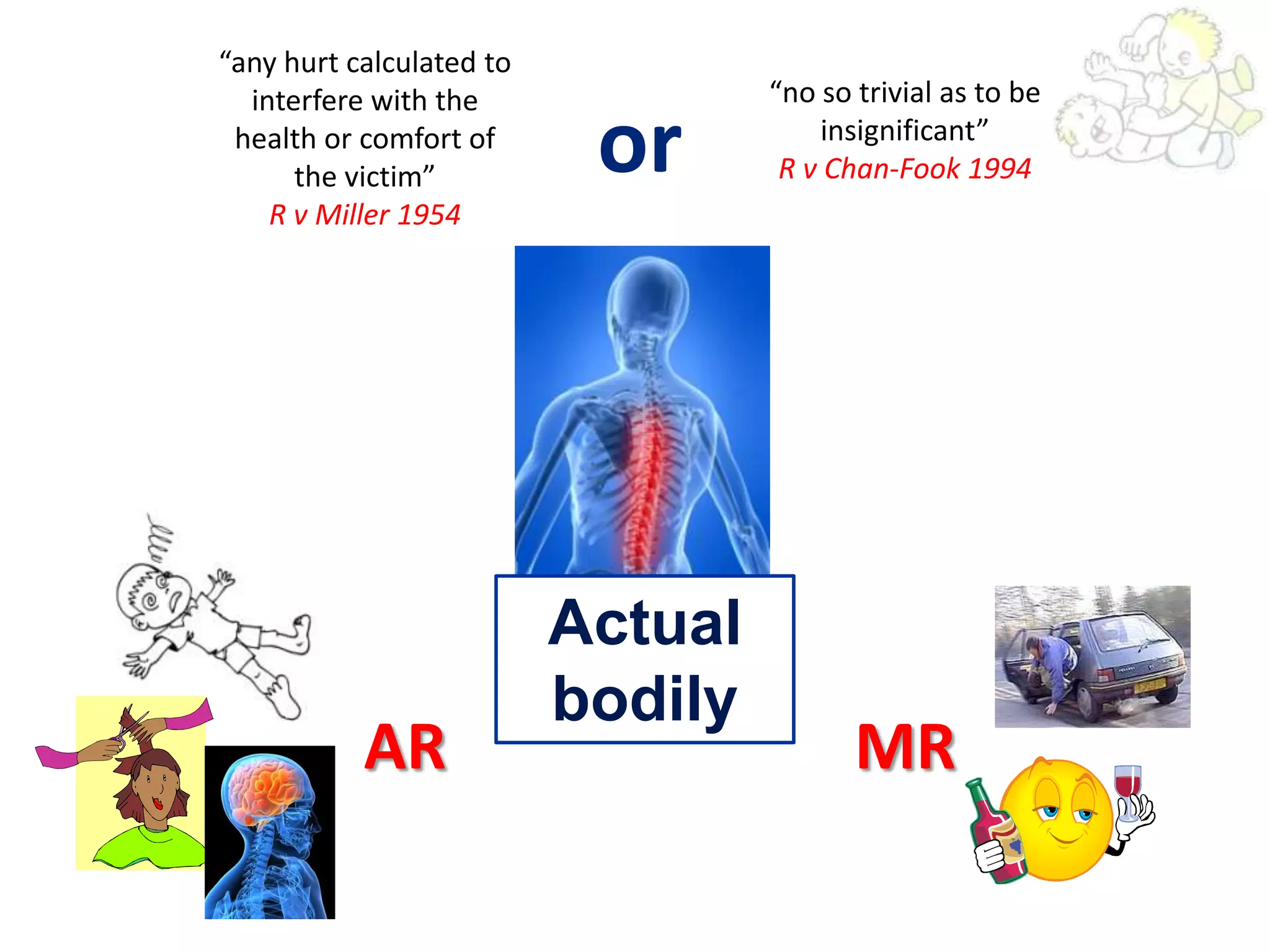
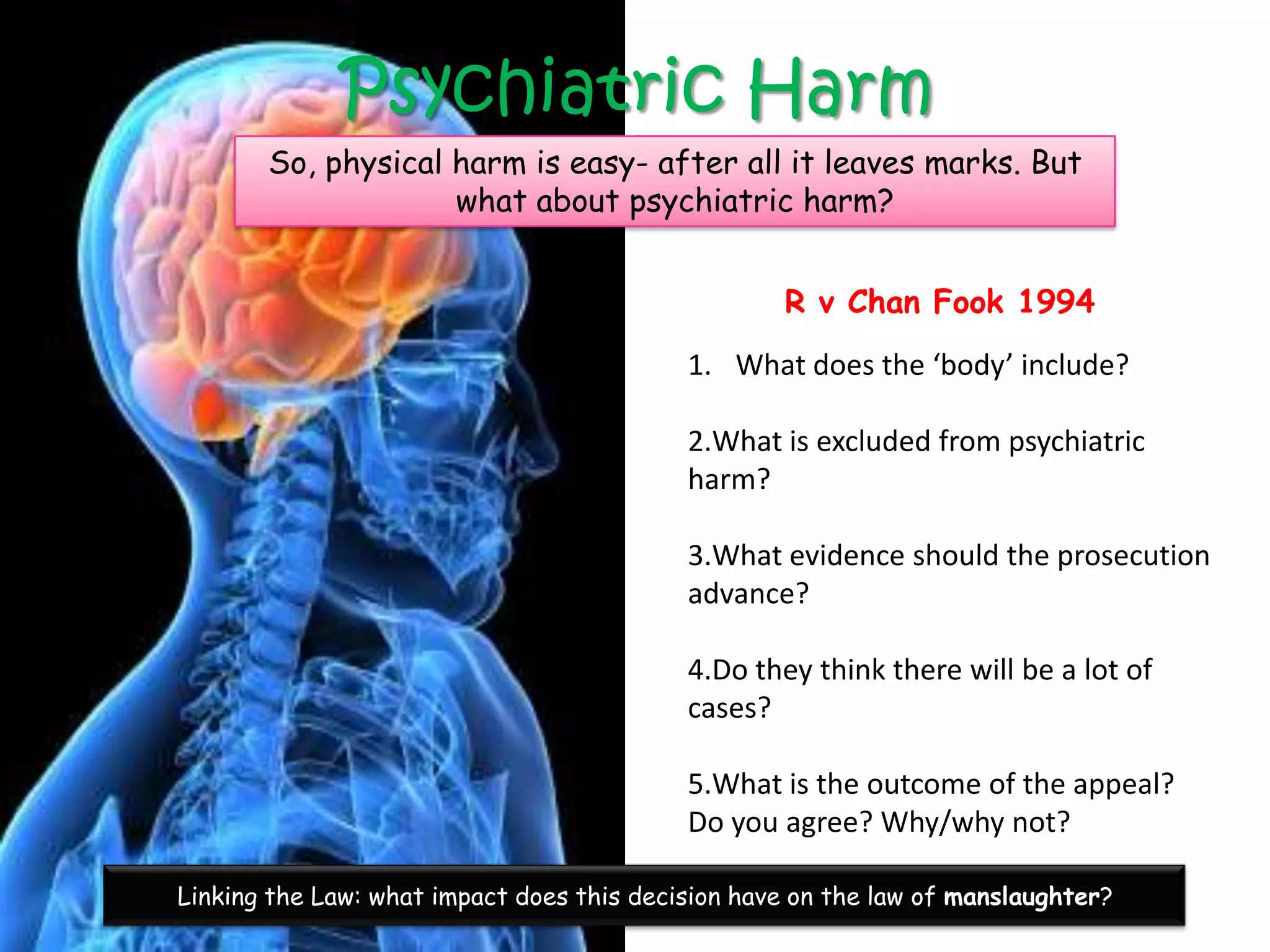
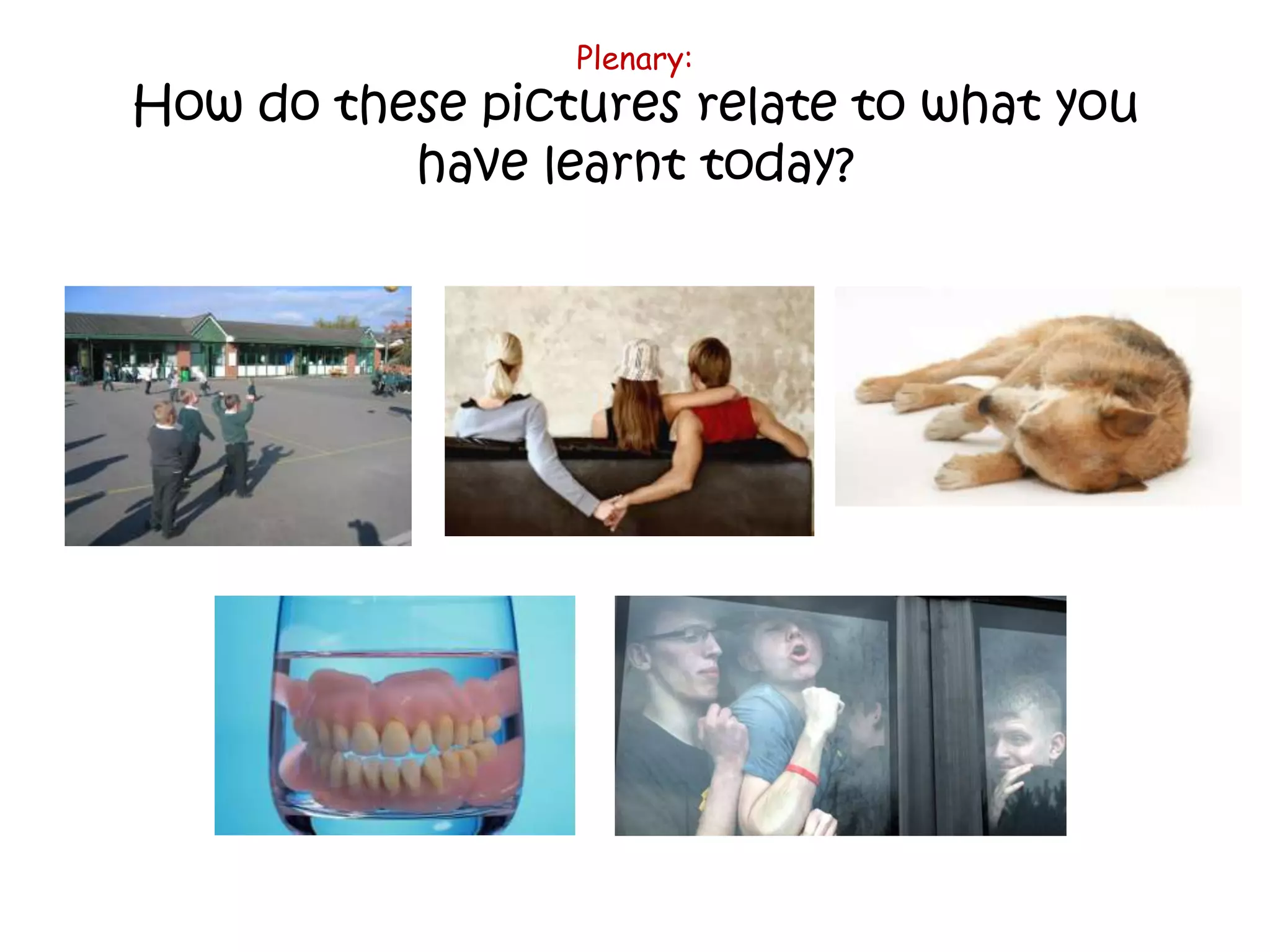
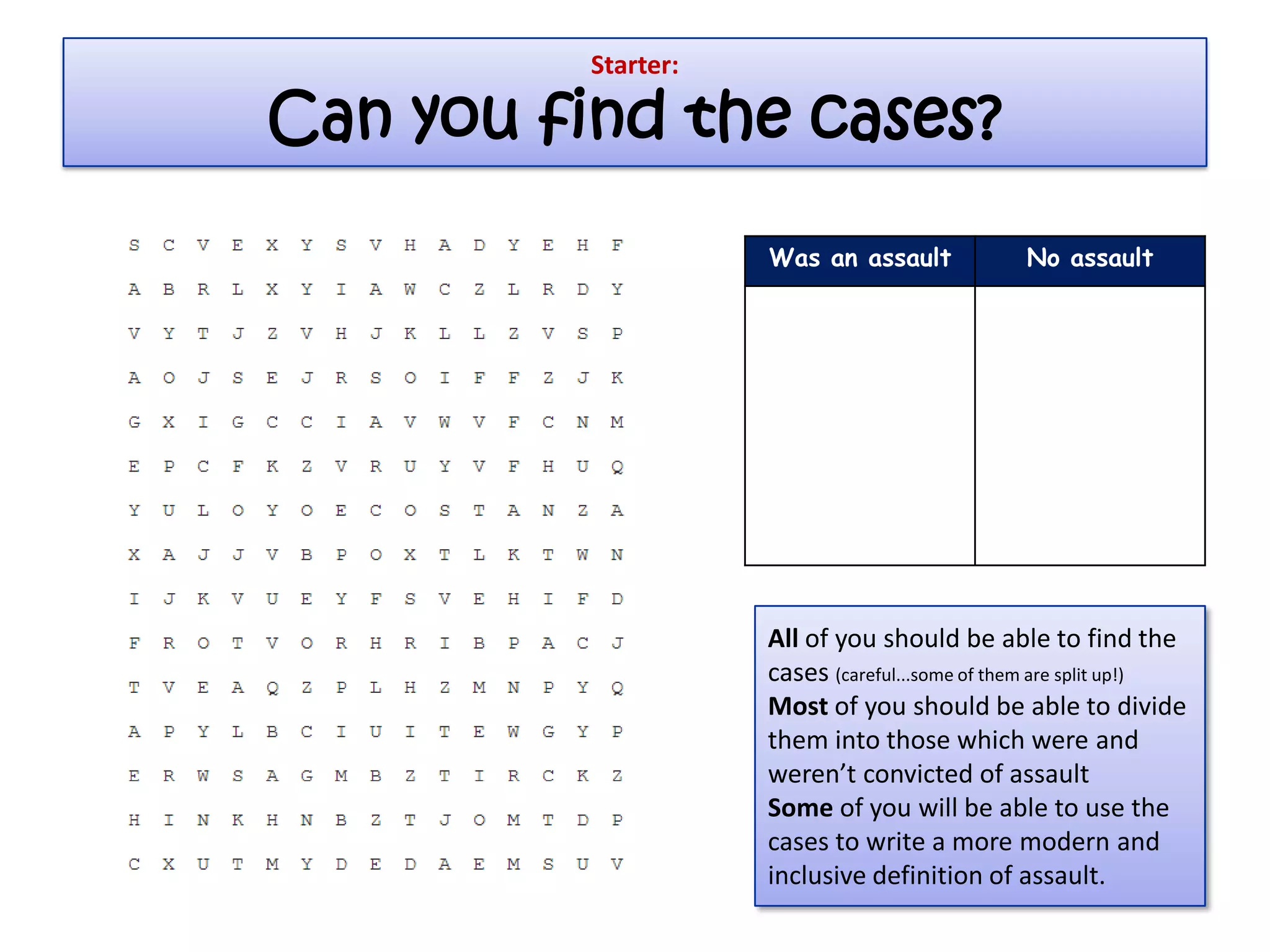
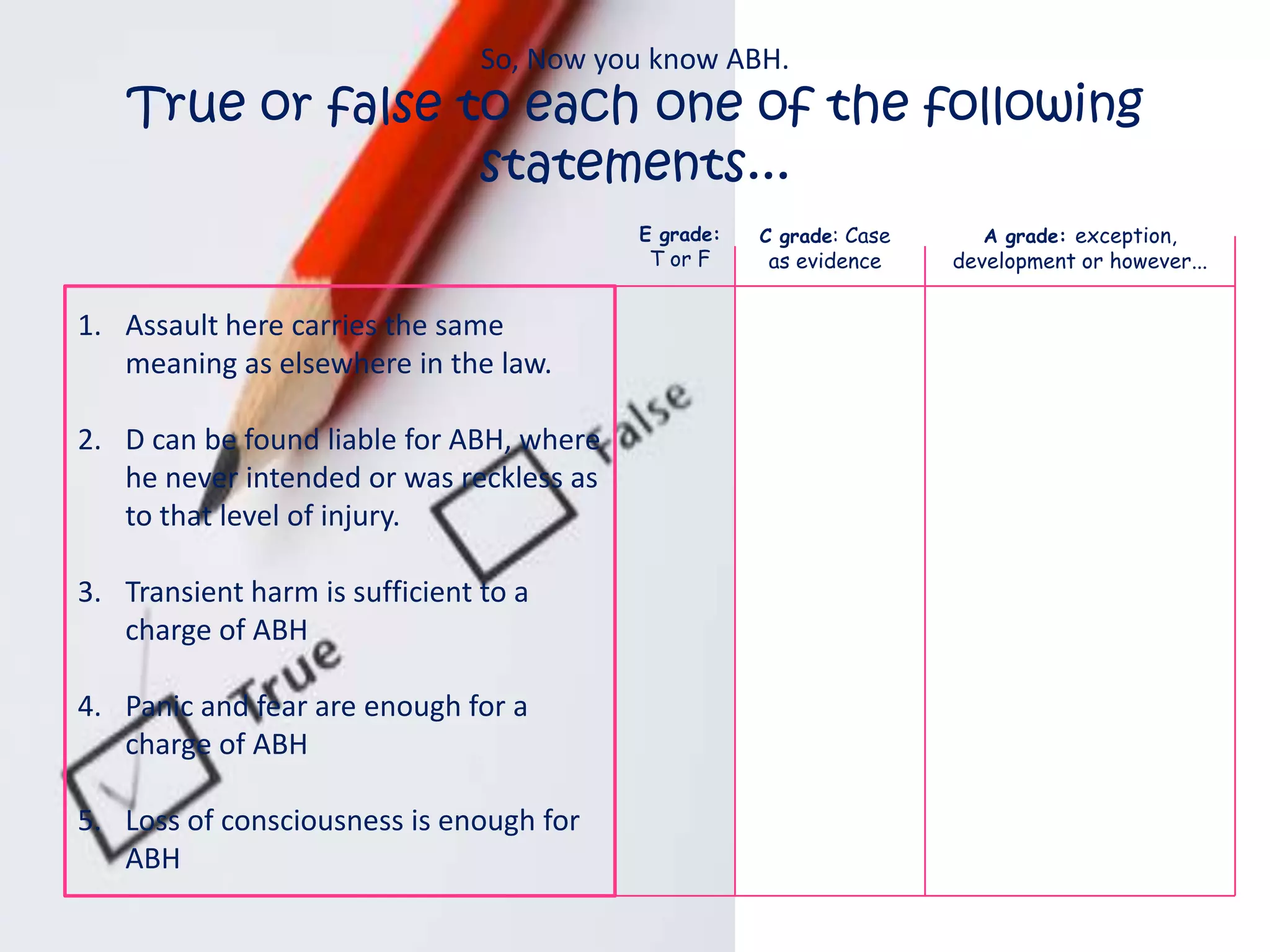
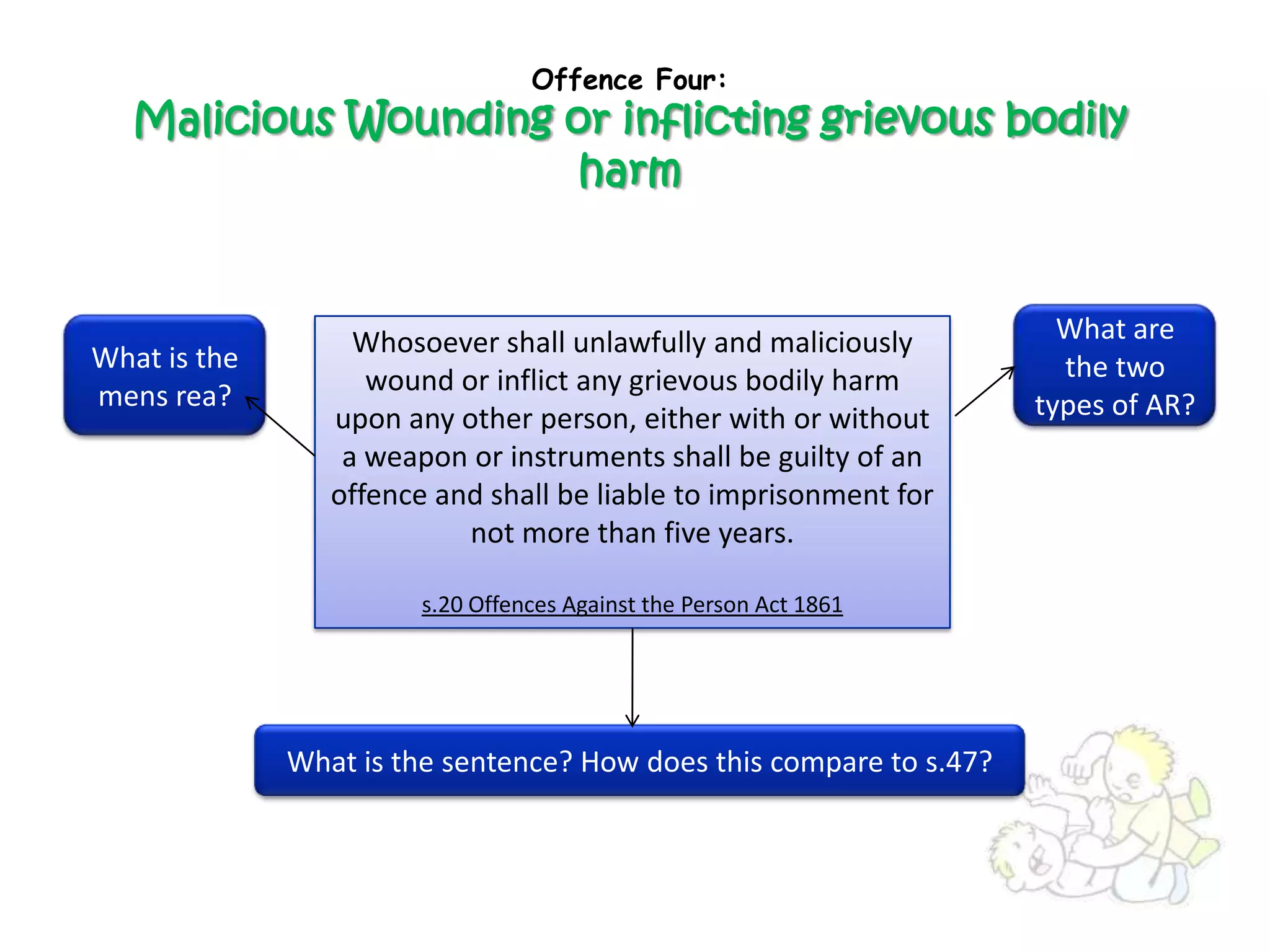
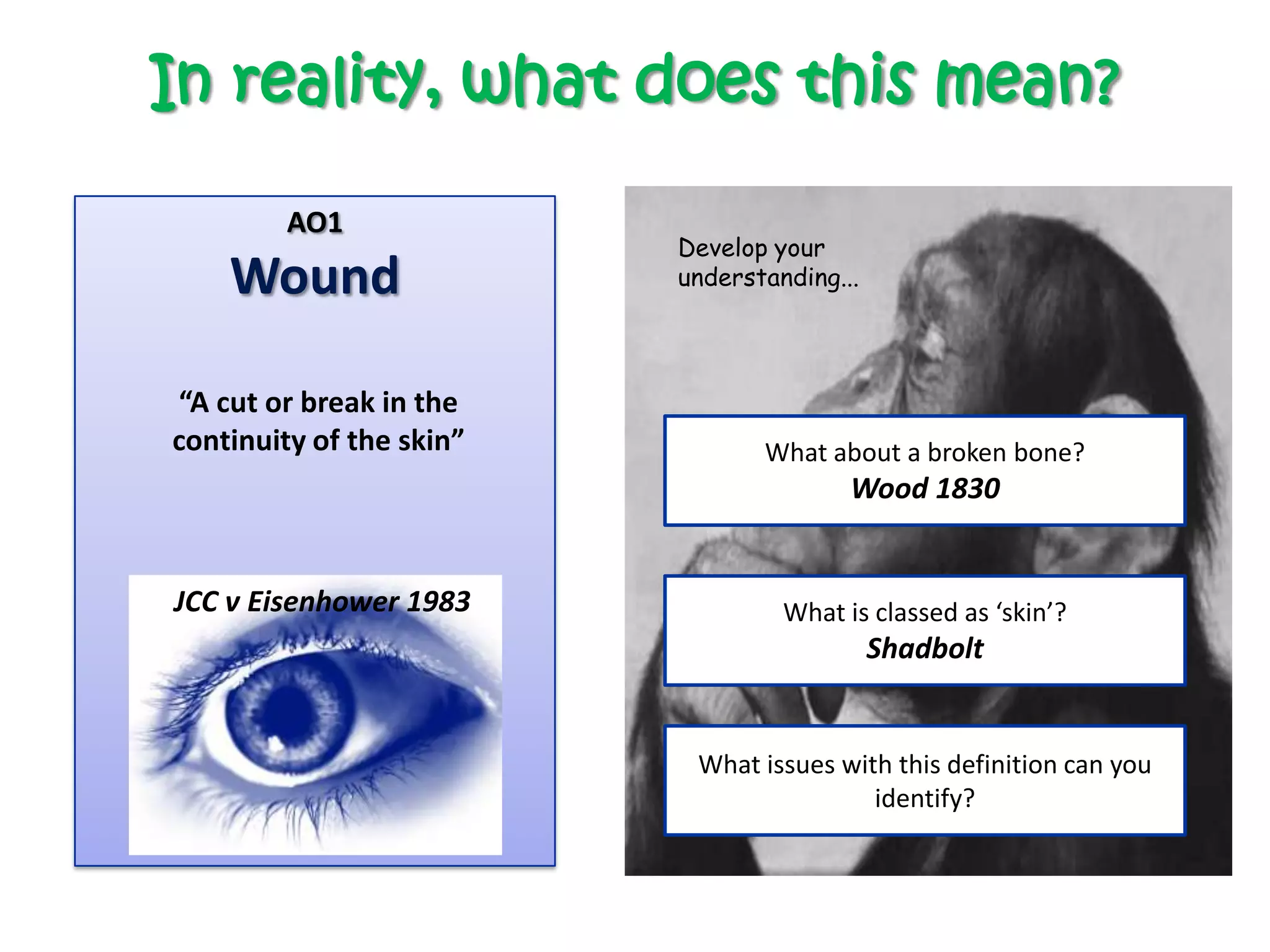
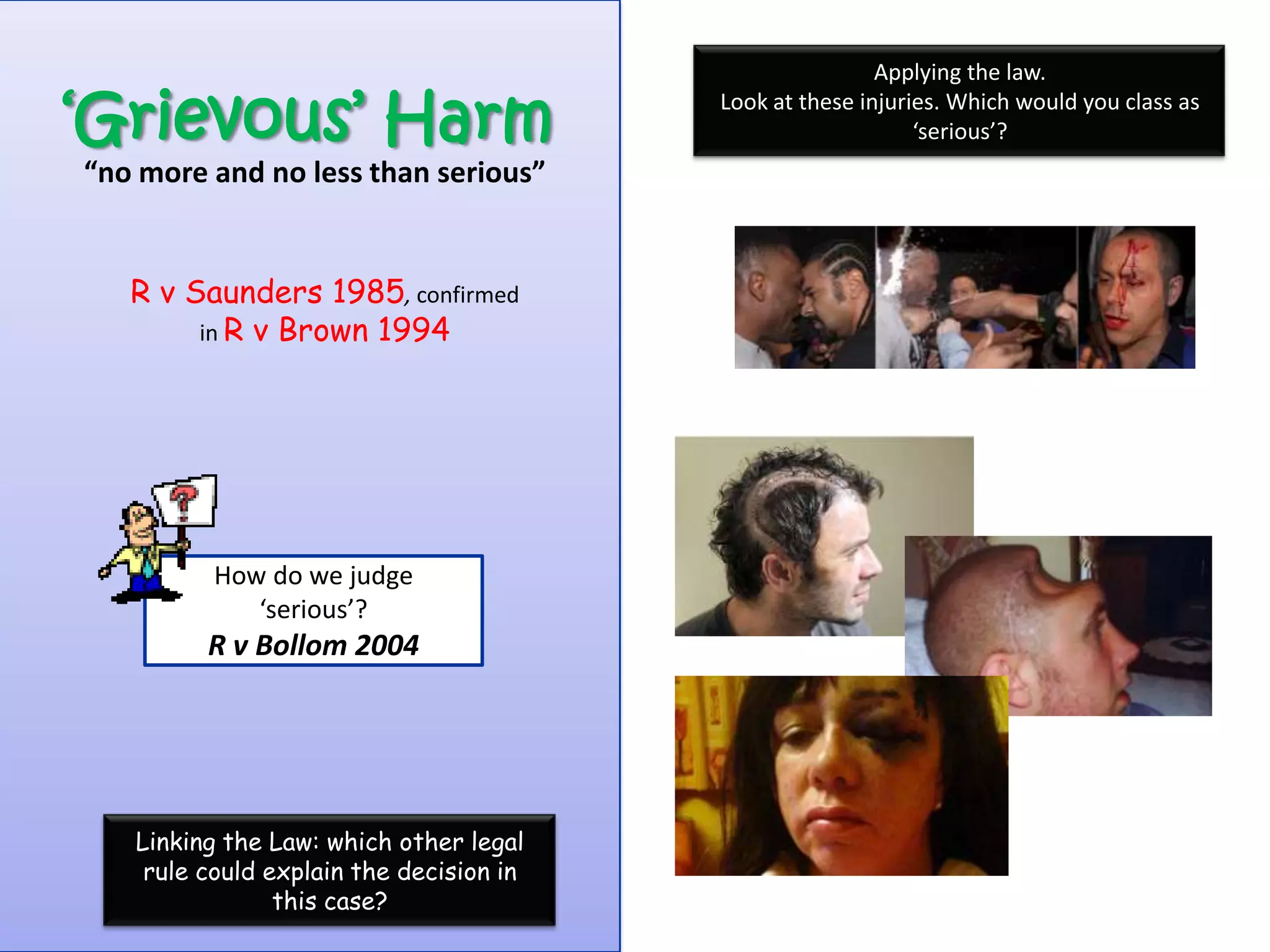
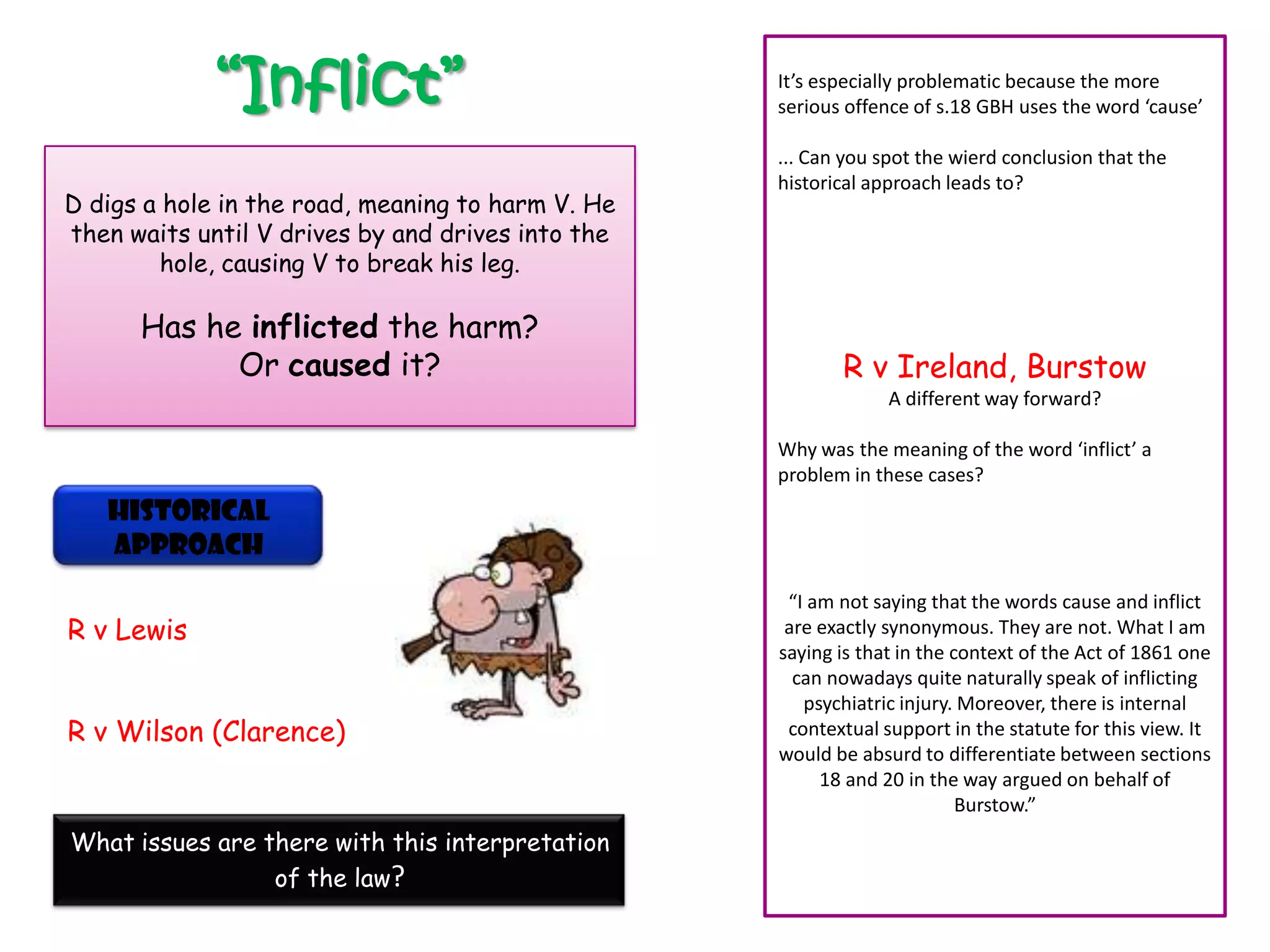
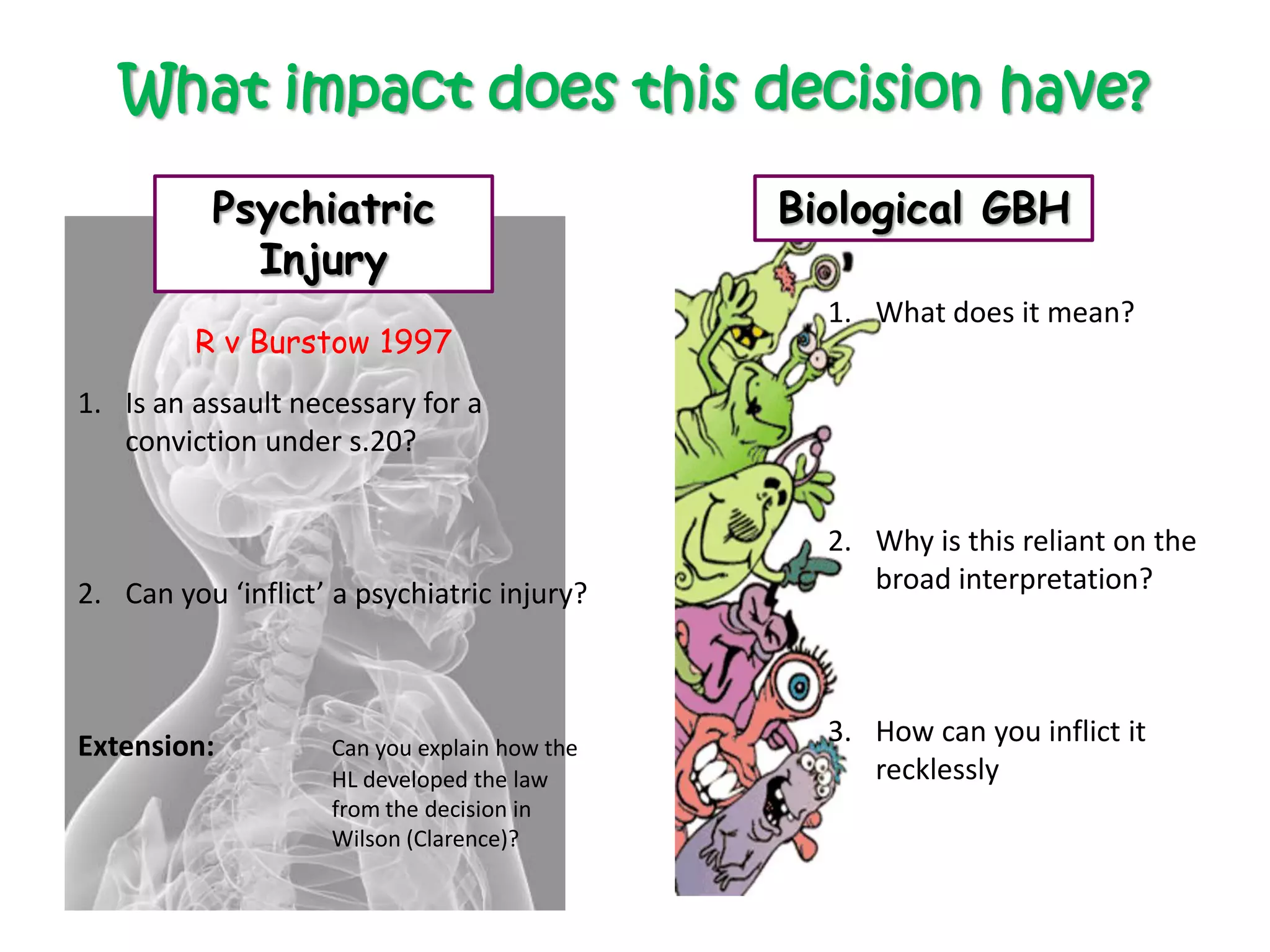

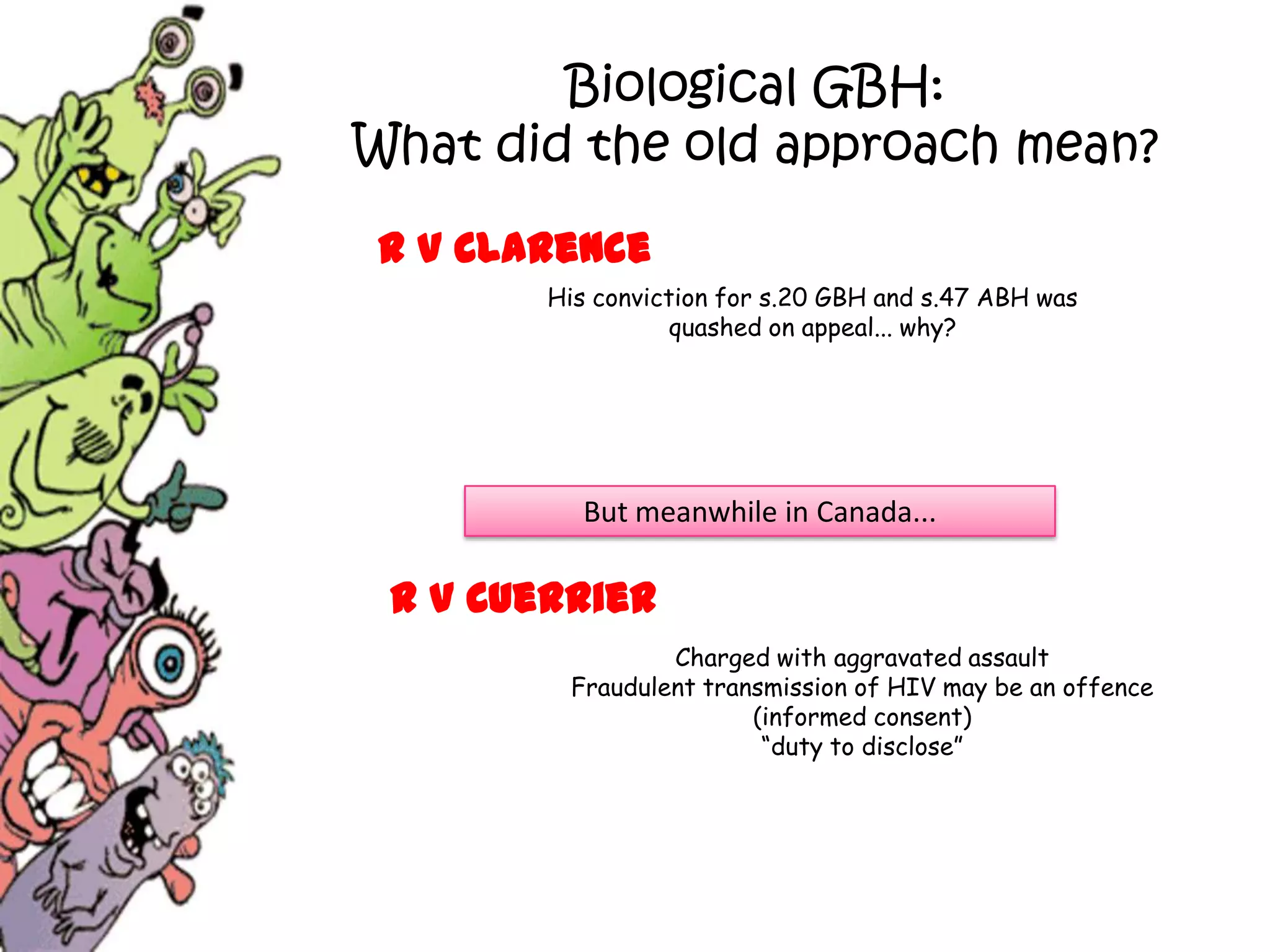

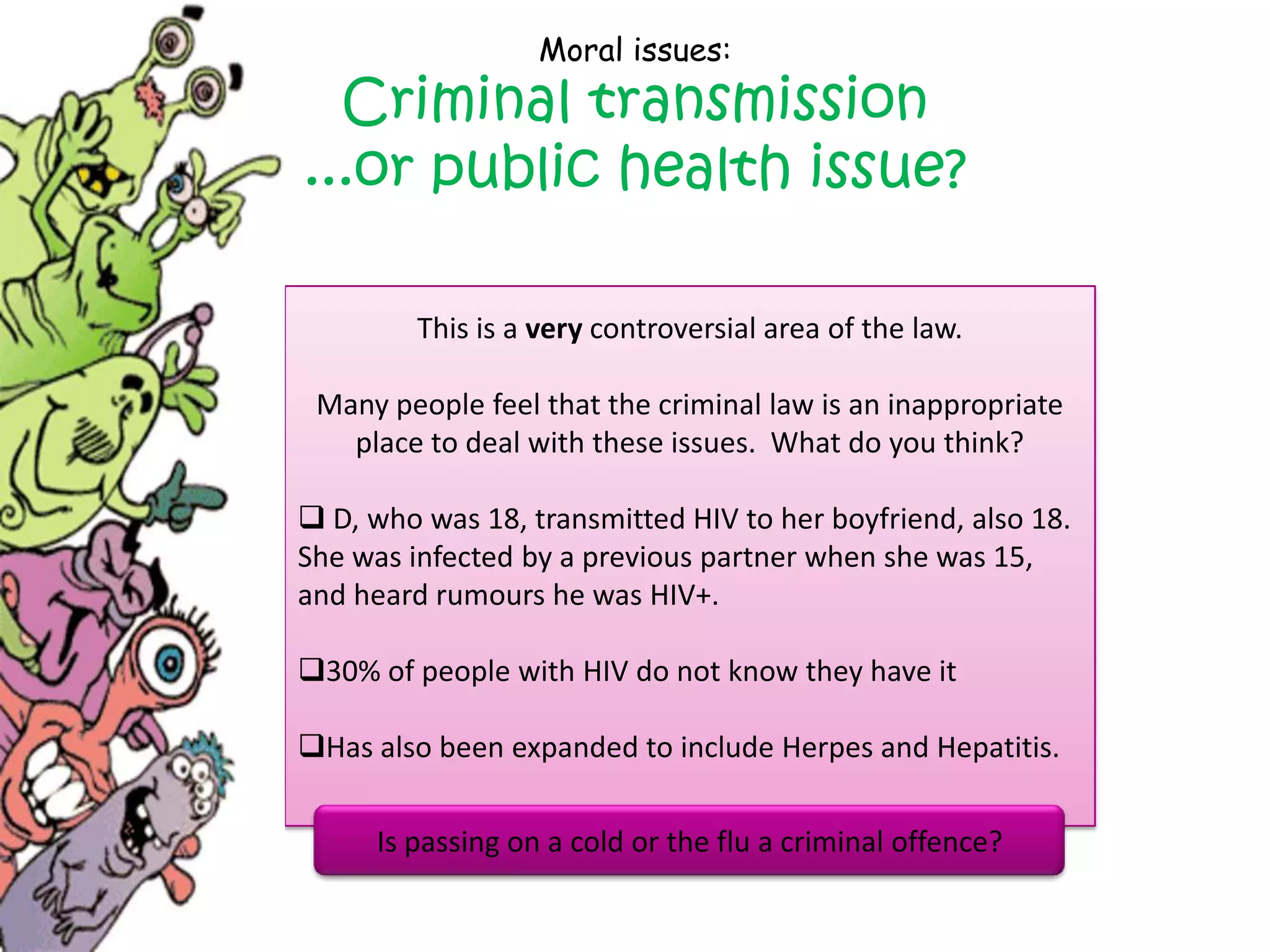
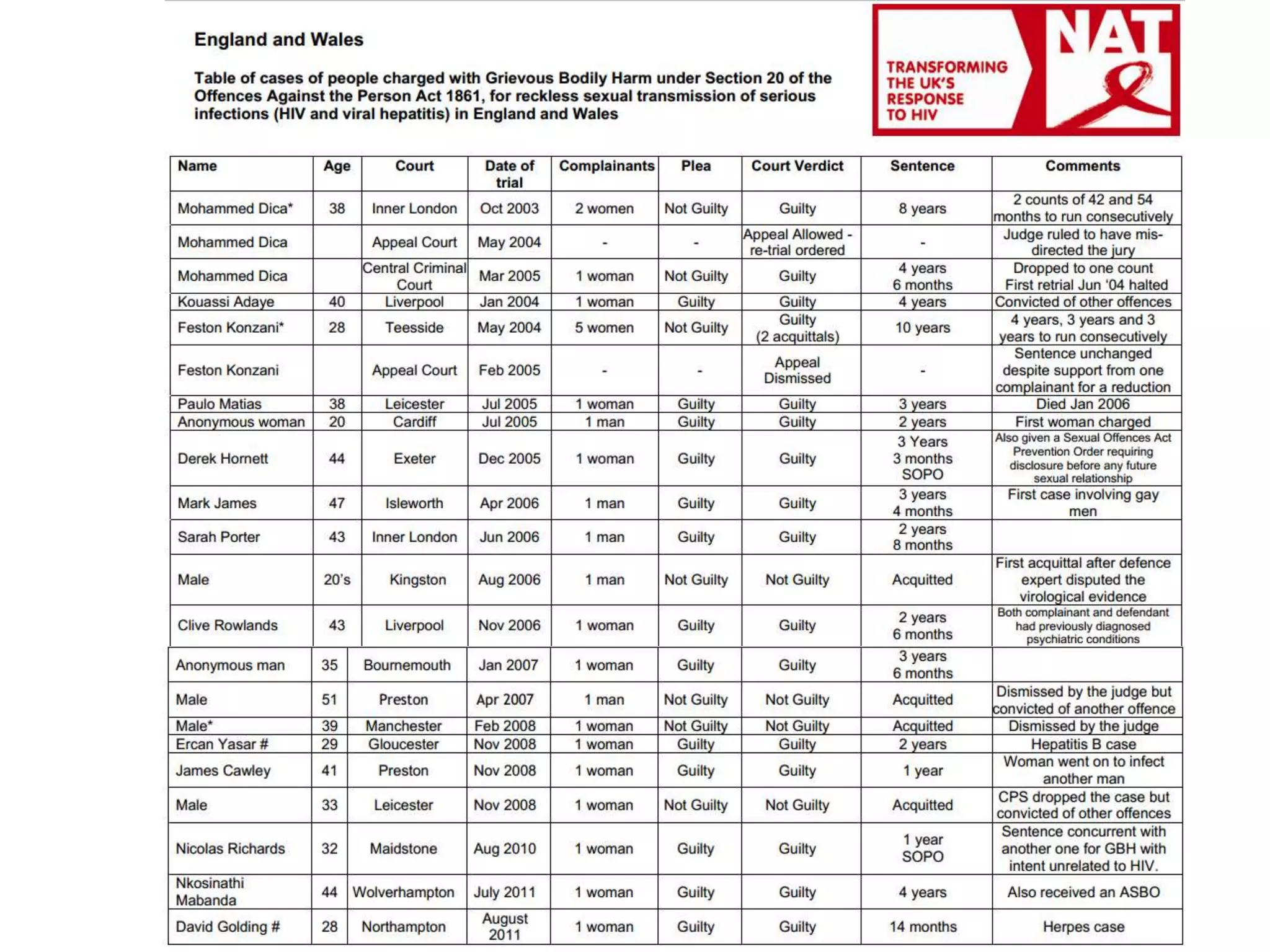
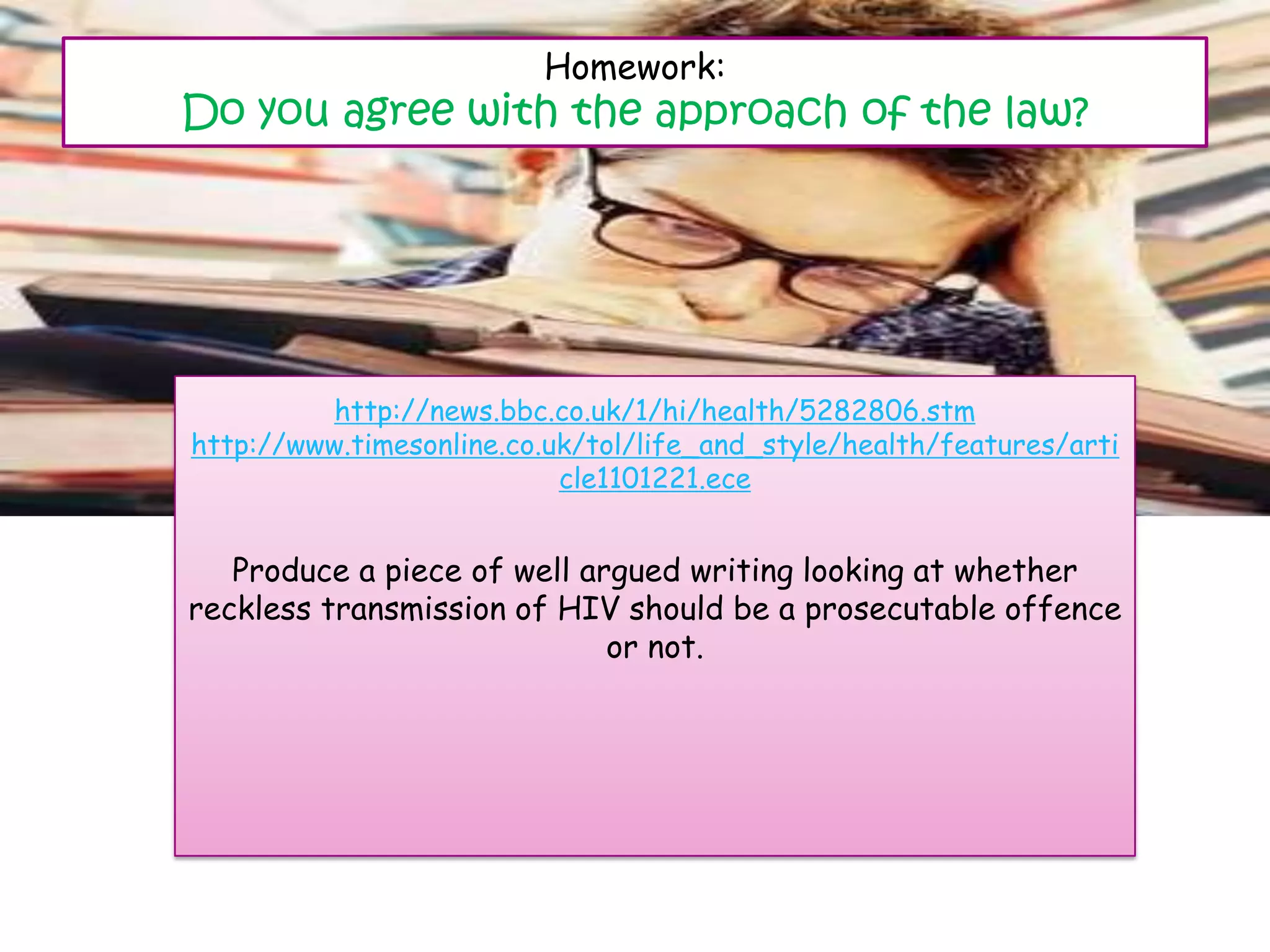
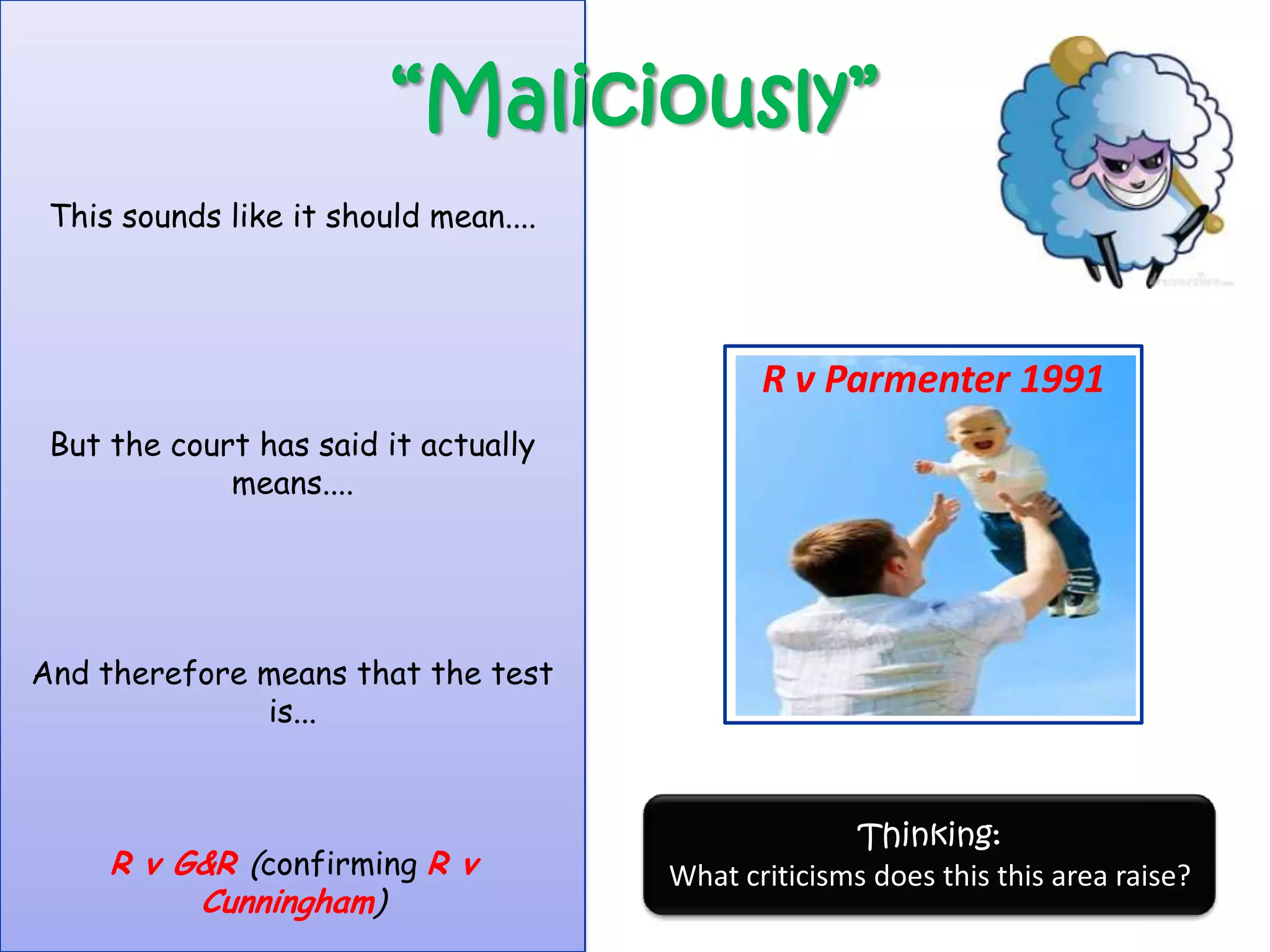

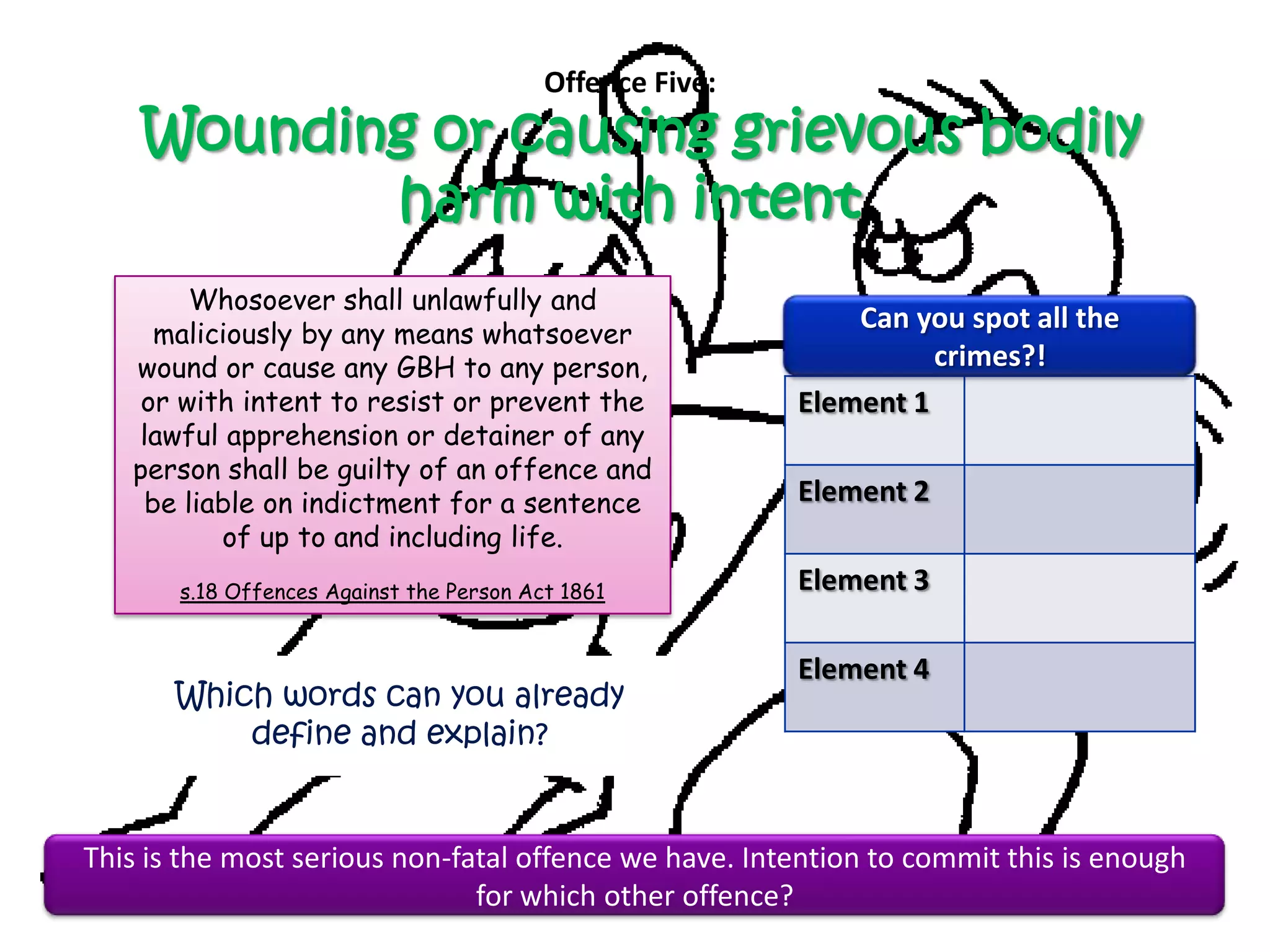
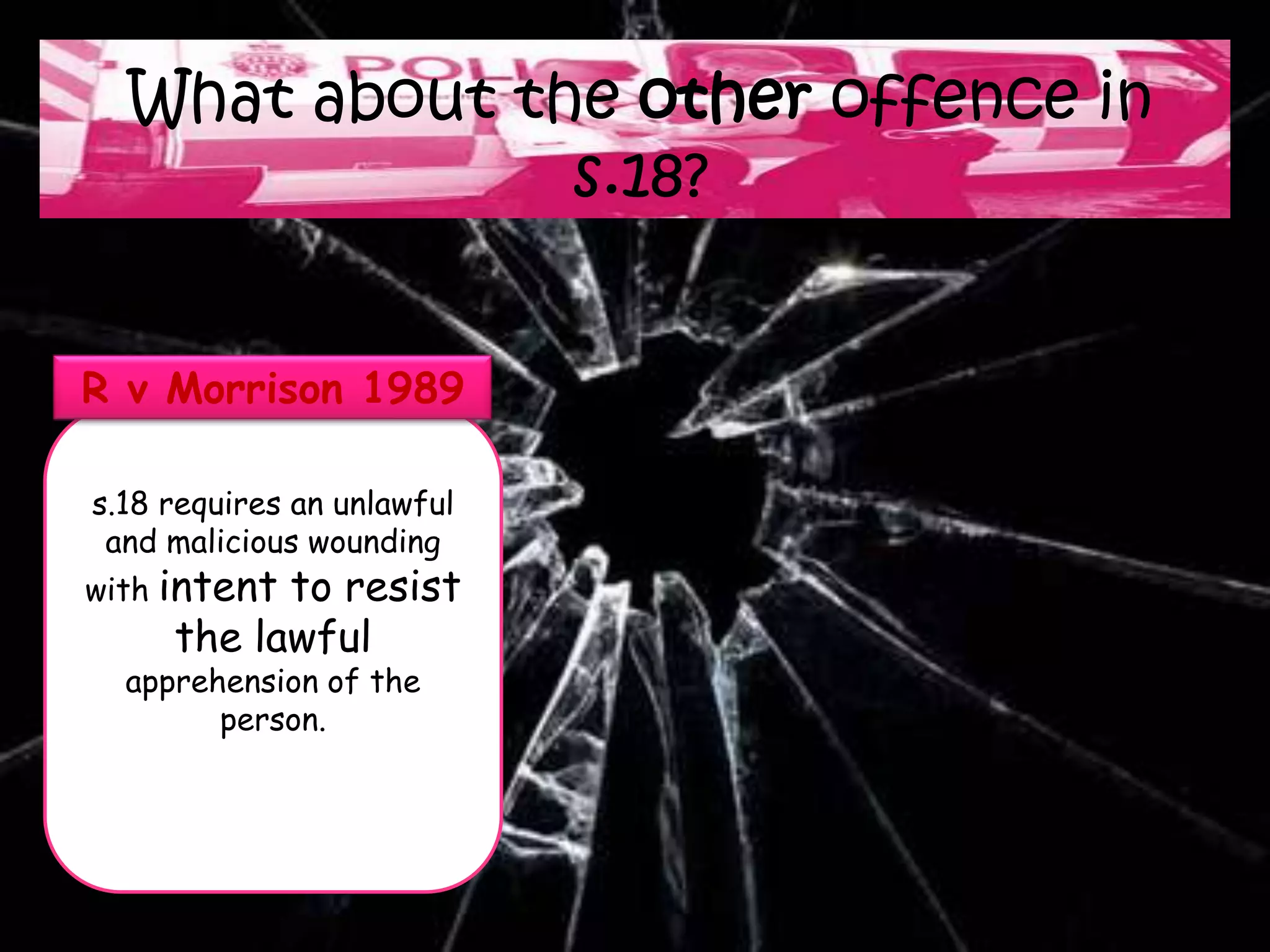
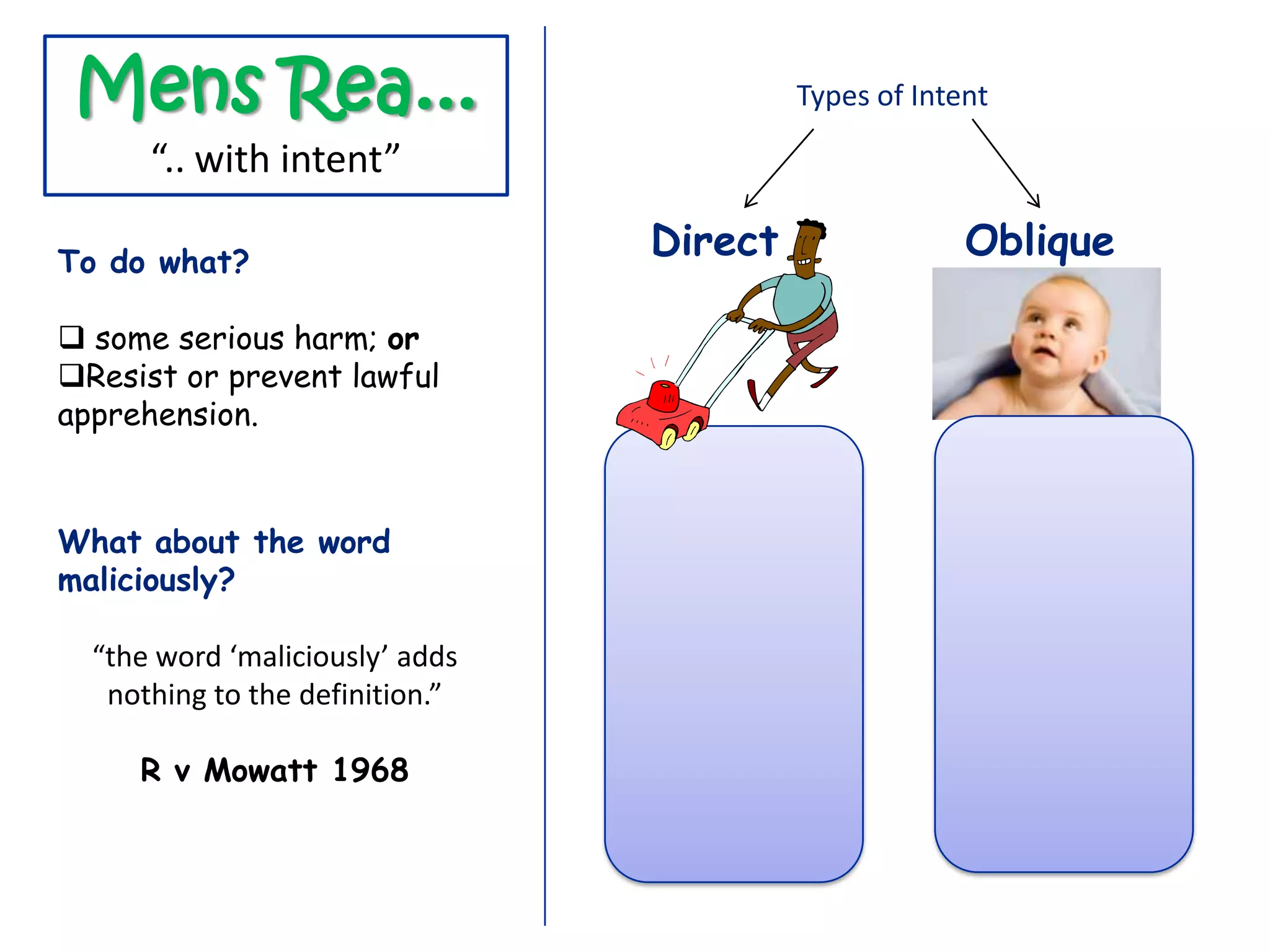
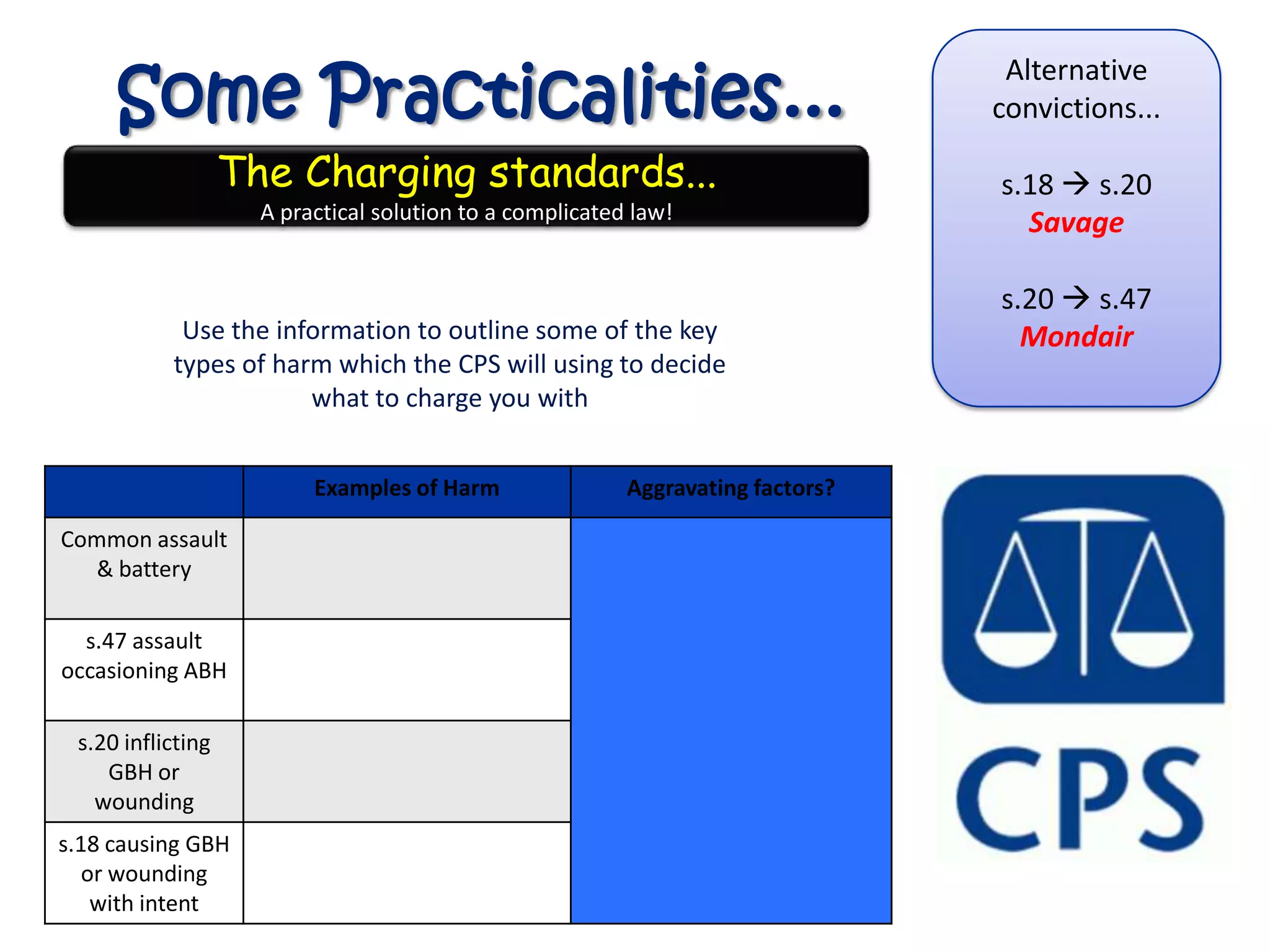
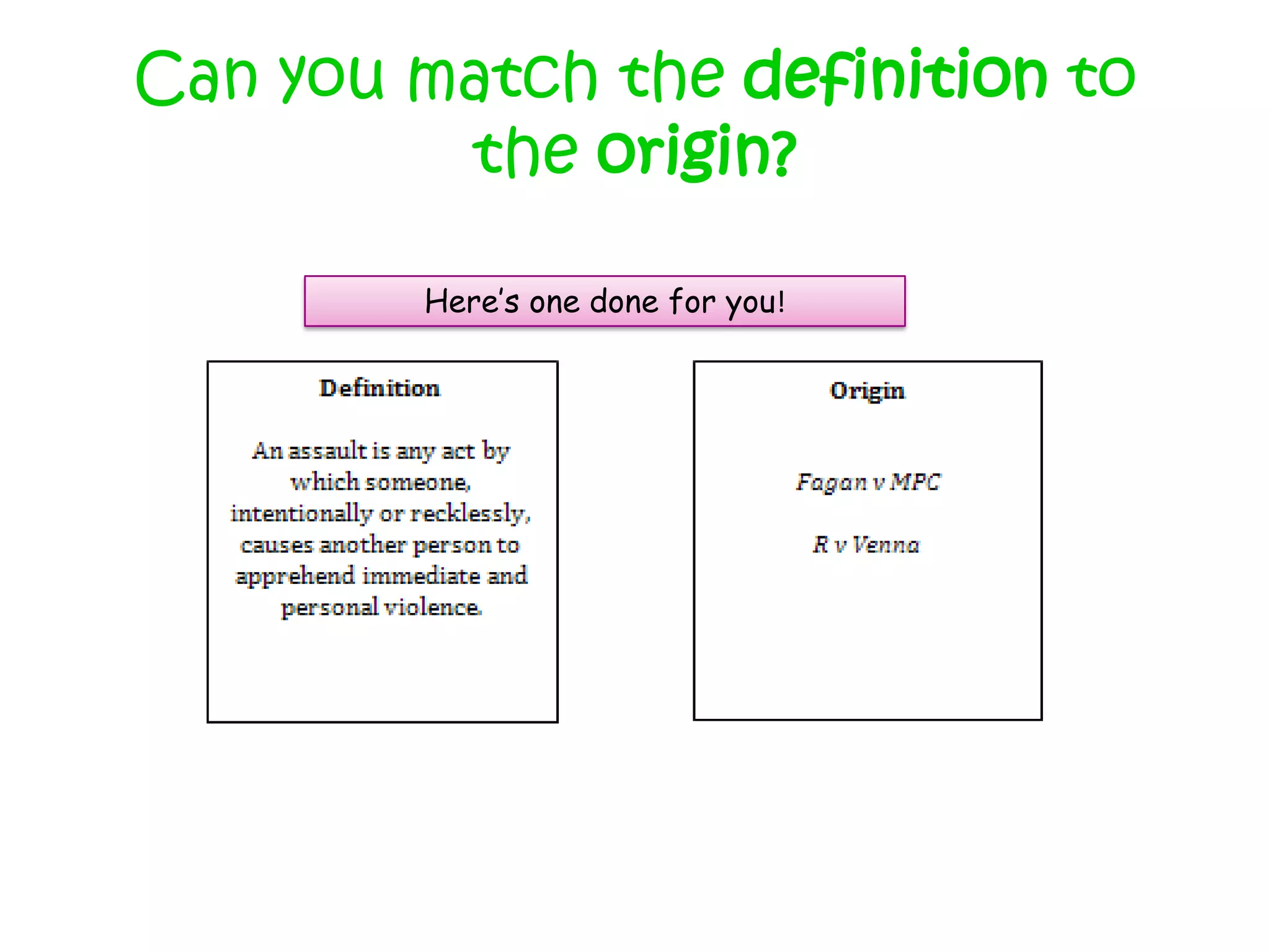
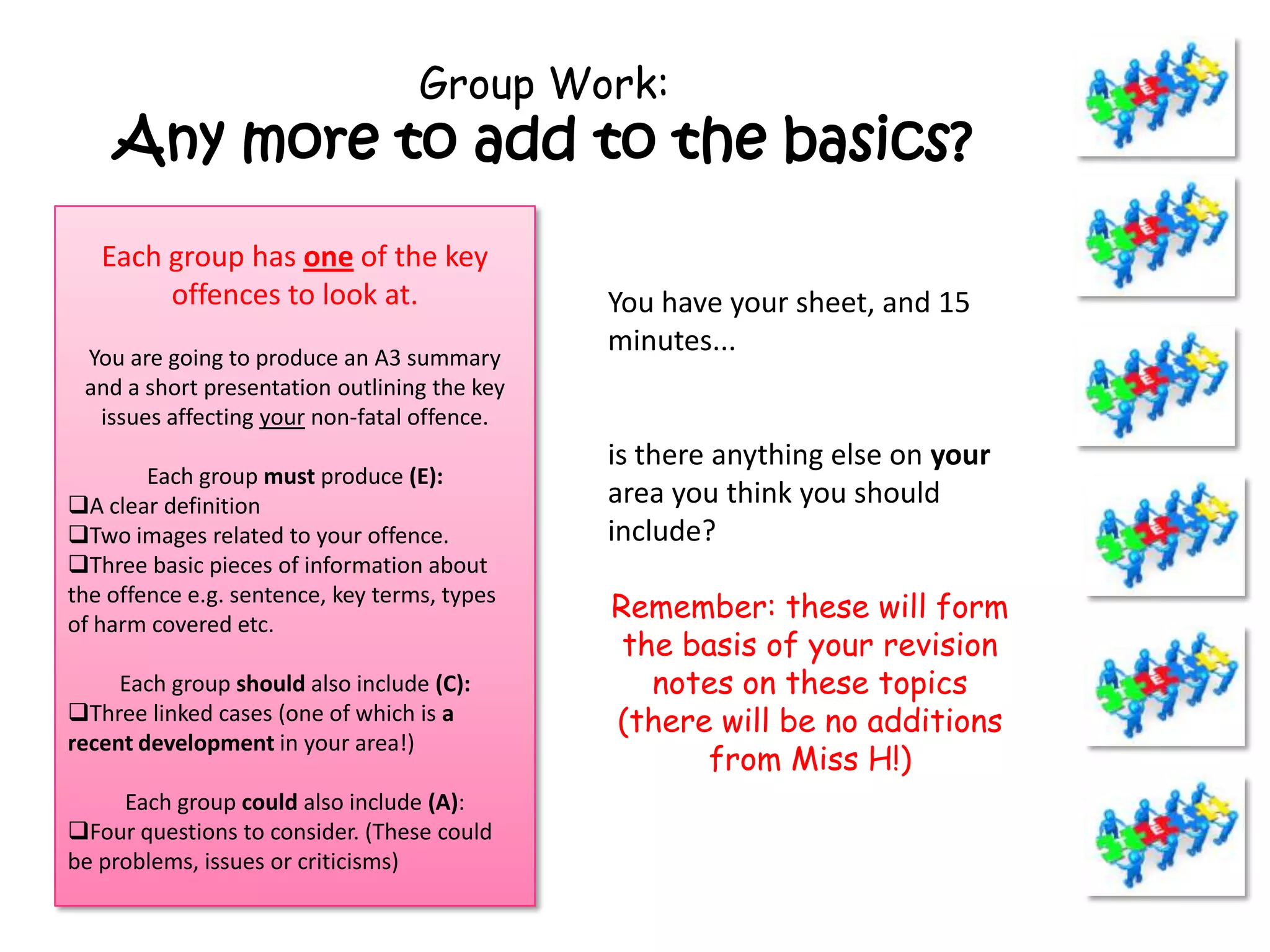

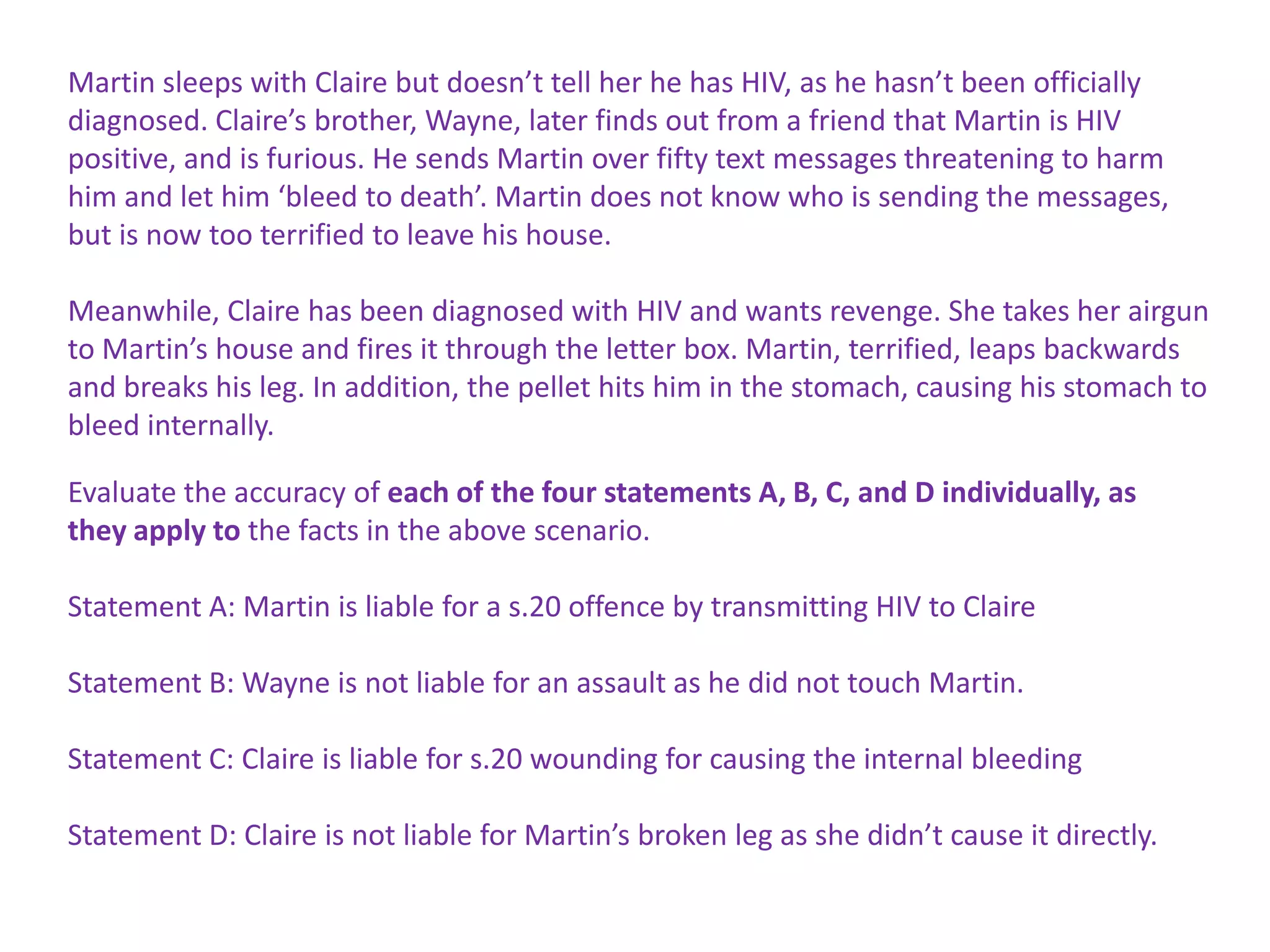
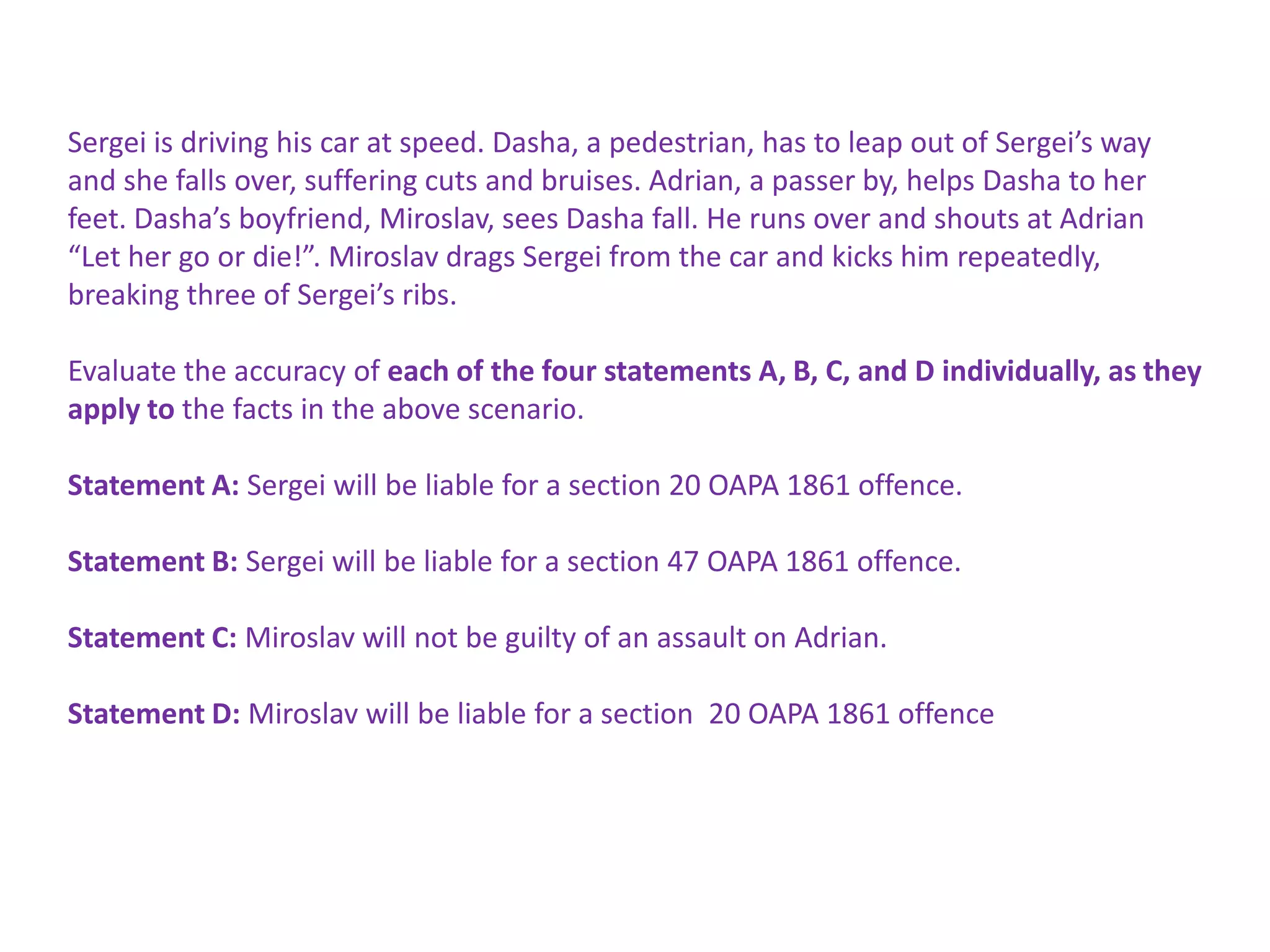
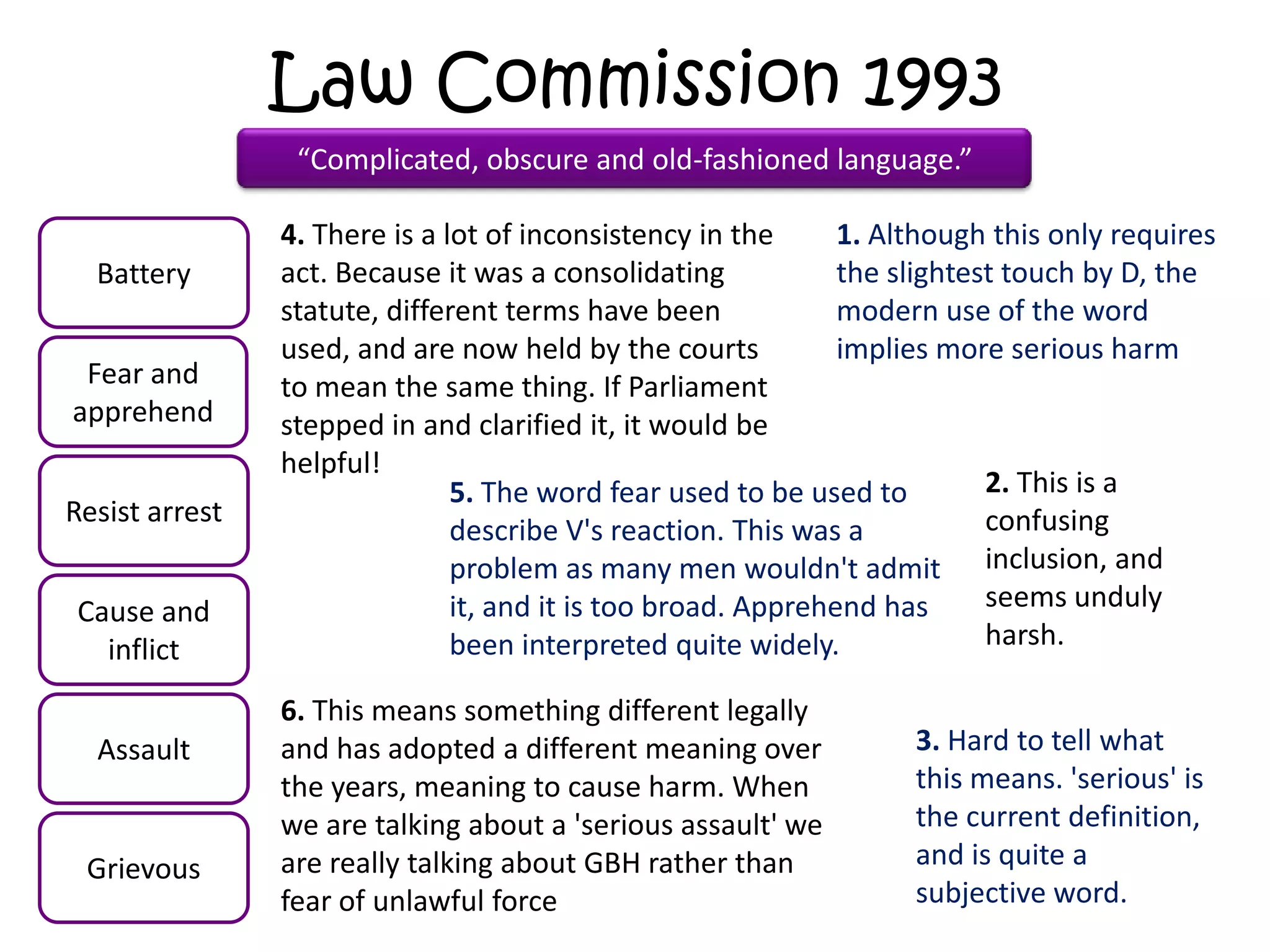
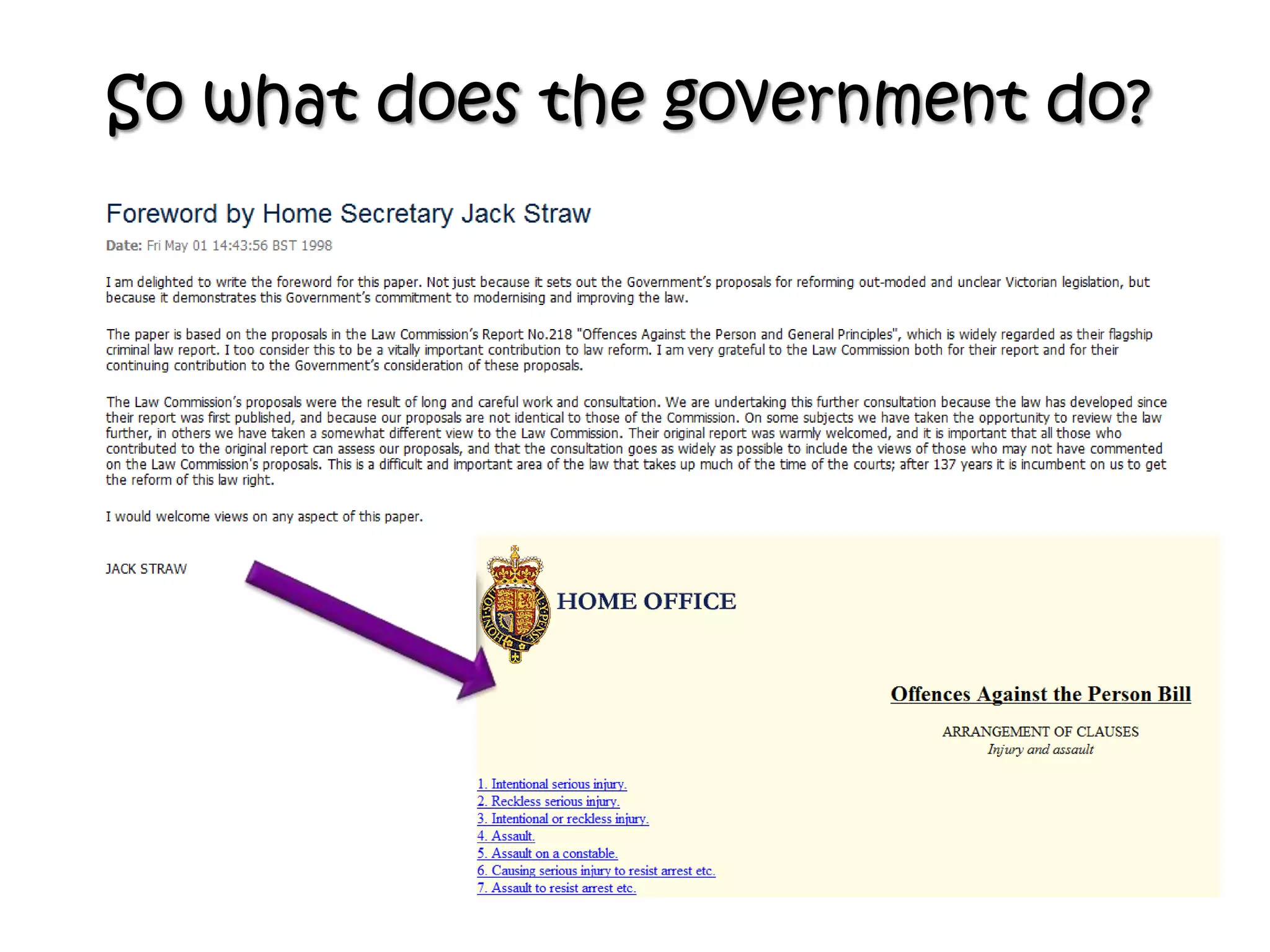
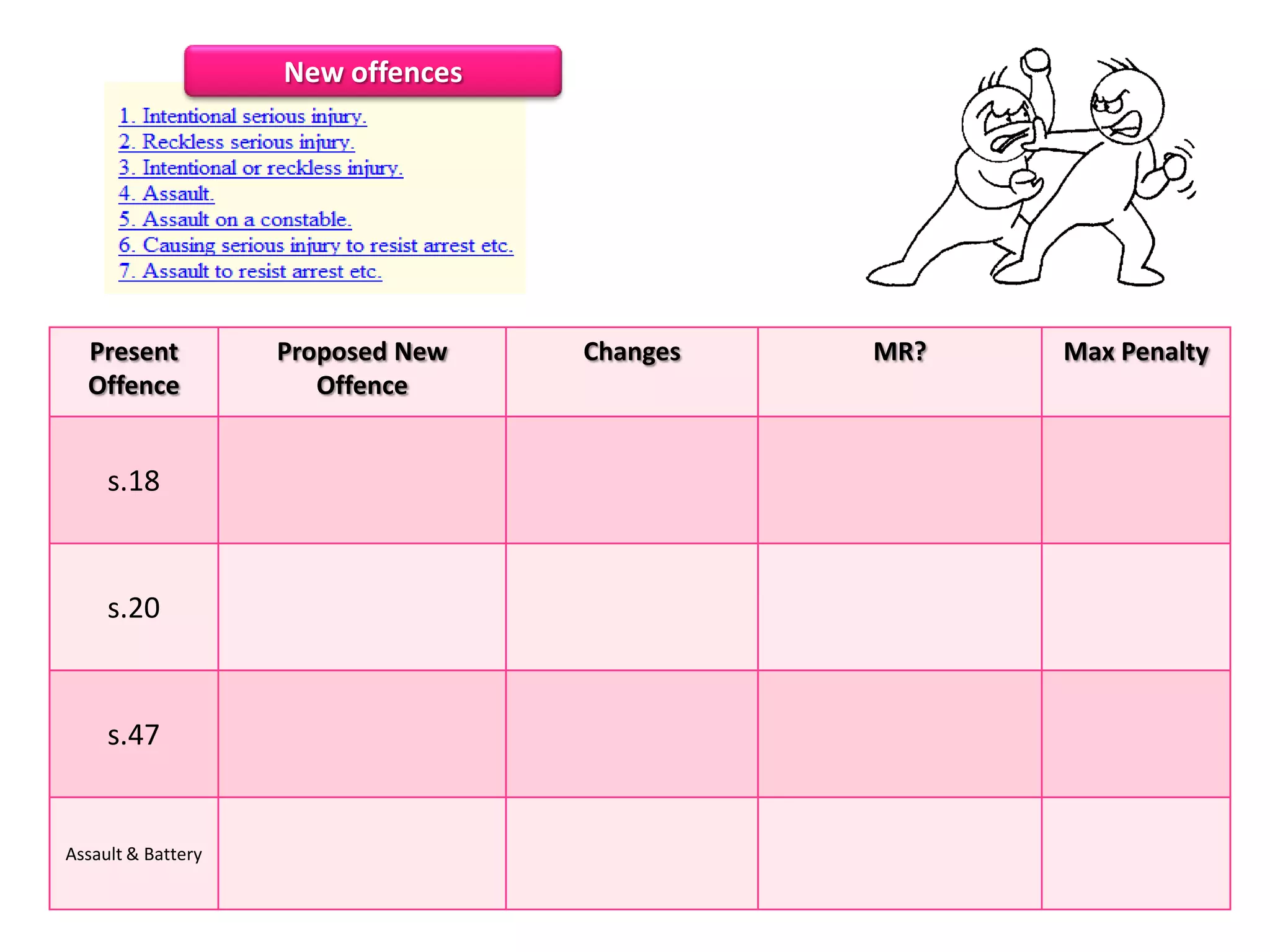
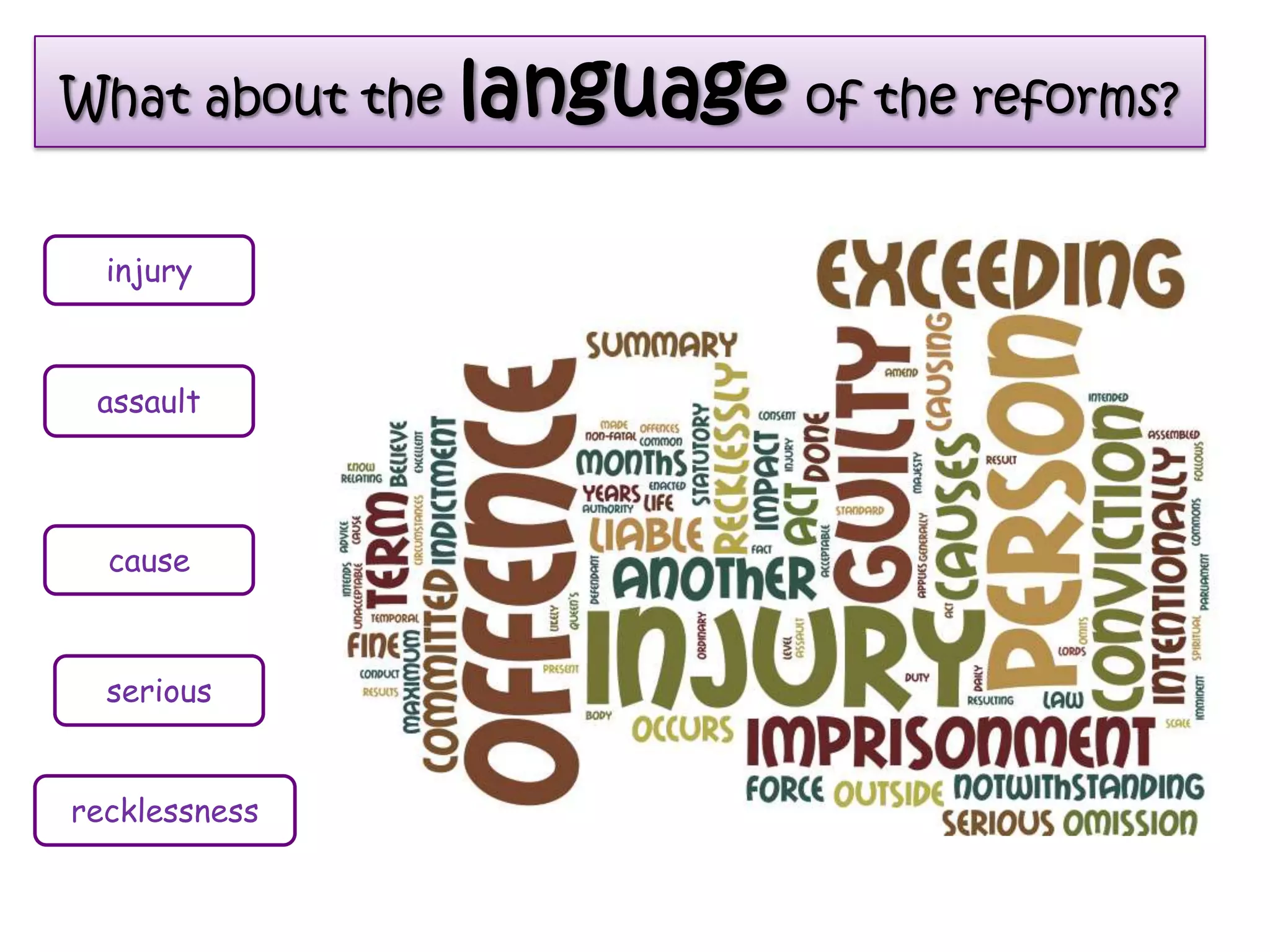

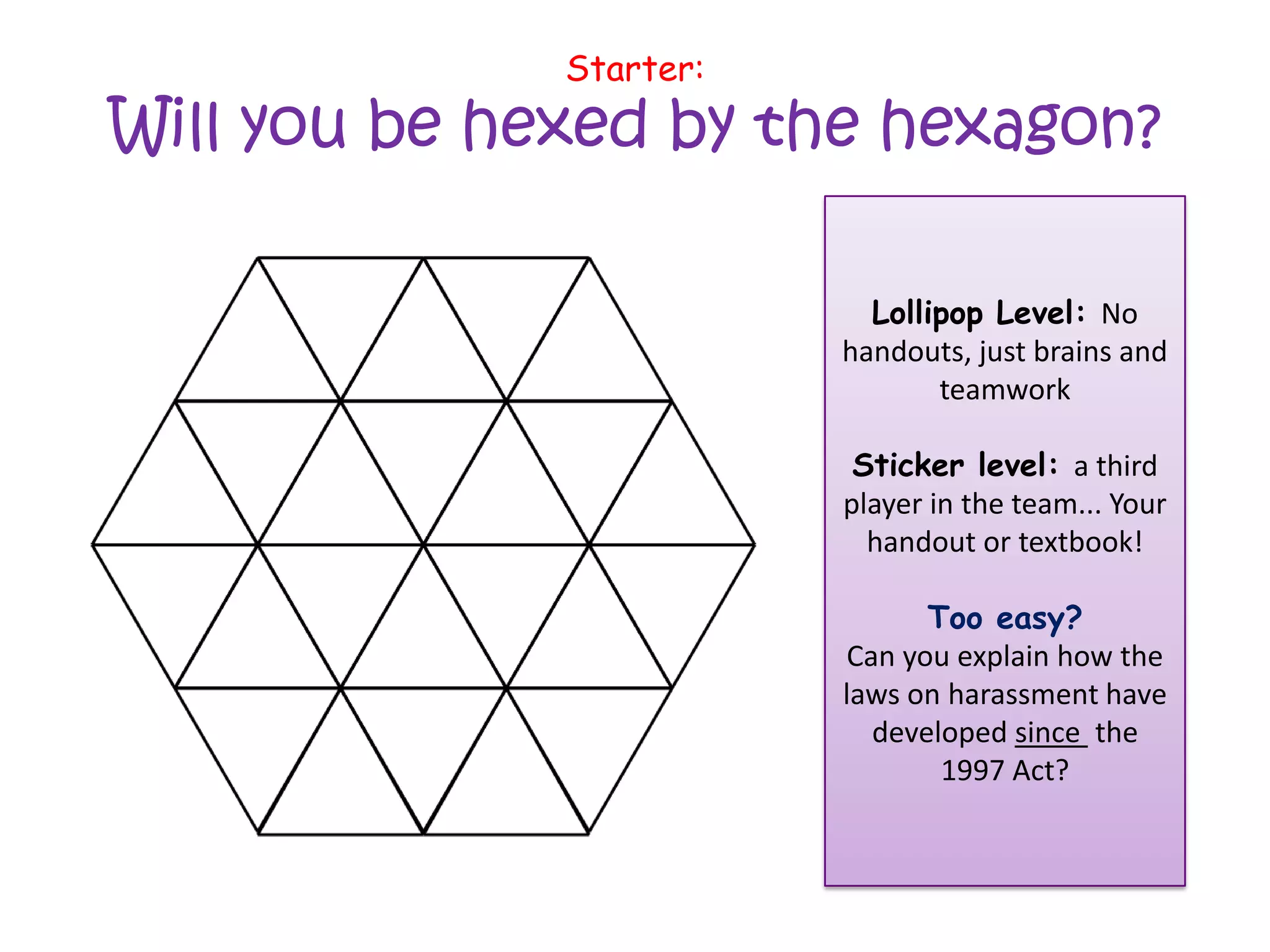
![Sinita and Mina share a flat. One night This is a problem question and will
Sinita finds Mina kissing Sinita’s
boyfriend, Alberto. She picks up a glass of
appear in part b of the paper.
water, raises it in the air and shouts at
Mina, “You hussy, I’ll kill you!” She tries to You will have three and must answer one of them.
throw the water at Mina but the glass
slips from her hand and strikes Mina in
the face cutting her forehead. They are worth 50 marks (25 AO1, 20 AO2 and 5
Ao3) and should be logical, detailed and well
Alberto is so angry that he pushes Sinita applied... In fifty minutes
and she falls backwards over a stool onto
the floor and is knocked unconscious for a
few seconds. You should refer to at least eight well explained
cases and will need to know your definitions to
When Sinita recovers consciousness she is help.
still dizzy and stumbles towards Mina
knocking her onto the floor. Mina suffers
a fractured arm. You should deal with each defendant seperately
(subheadings can be useful)
Later that evening, when Sinita is
sleeping, Mina gets a pair of scissors and
cuts off Sinita’s ponytail in an act of You need to remember:
revenge. O
C
Discuss the potential criminal liability of
Sinita, Alberto and Mina for the above D
incidents. [50] In structuring your answer.](https://image.slidesharecdn.com/nfoap2013-130311060109-phpapp02/75/NFOAP-2013-49-2048.jpg)
![Stage One: highlight and annotate the problem, identifying relevant cases, statutes
and definitions.
Sinita and Mina share a flat. One night Sinita finds Mina kissing
Sinita’s boyfriend, Alberto. She picks up a glass of water, raises it
in the air and shouts at Mina, “You hussy, I’ll kill you!” She tries to
throw the water at Mina but the glass slips from her hand and
strikes Mina in the face cutting her forehead.
Alberto is so angry that he pushes Sinita and she falls backwards
over a stool onto the floor and is knocked unconscious for a few
seconds.
When Sinita recovers consciousness she is still dizzy and stumbles
towards Mina knocking her onto the floor. Mina suffers a
fractured arm.
Later that evening, when Sinita is sleeping, Mina gets a pair of
scissors and cuts off Sinita’s ponytail in an act of revenge.
Discuss the potential criminal liability of Sinita, Alberto and
Mina for the above incidents. [50]](https://image.slidesharecdn.com/nfoap2013-130311060109-phpapp02/75/NFOAP-2013-50-2048.jpg)
![Stage Two: Start planning your answer by noting down the OCD issues for each
defendant.
Sinita and Mina share a flat. One night Sinita finds Mina kissing Sinita
Sinita’s boyfriend, Alberto. She picks up a glass of water, raises it
in the air and shouts at Mina, “You hussy, I’ll kill you!” She tries to
throw the water at Mina but the glass slips from her hand and
strikes Mina in the face cutting her forehead.
Alberto is so angry that he pushes Sinita and she falls backwards
over a stool onto the floor and is knocked unconscious for a few
seconds. Mina:
When Sinita recovers consciousness she is still dizzy and stumbles
towards Mina knocking her onto the floor. Mina suffers a
fractured arm.
Later that evening, when Sinita is sleeping, Mina gets a pair of Alberto:
scissors and cuts off Sinita’s ponytail in an act of revenge.
Discuss the potential criminal liability of Sinita, Alberto and
Mina for the above incidents. [50]](https://image.slidesharecdn.com/nfoap2013-130311060109-phpapp02/75/NFOAP-2013-51-2048.jpg)
